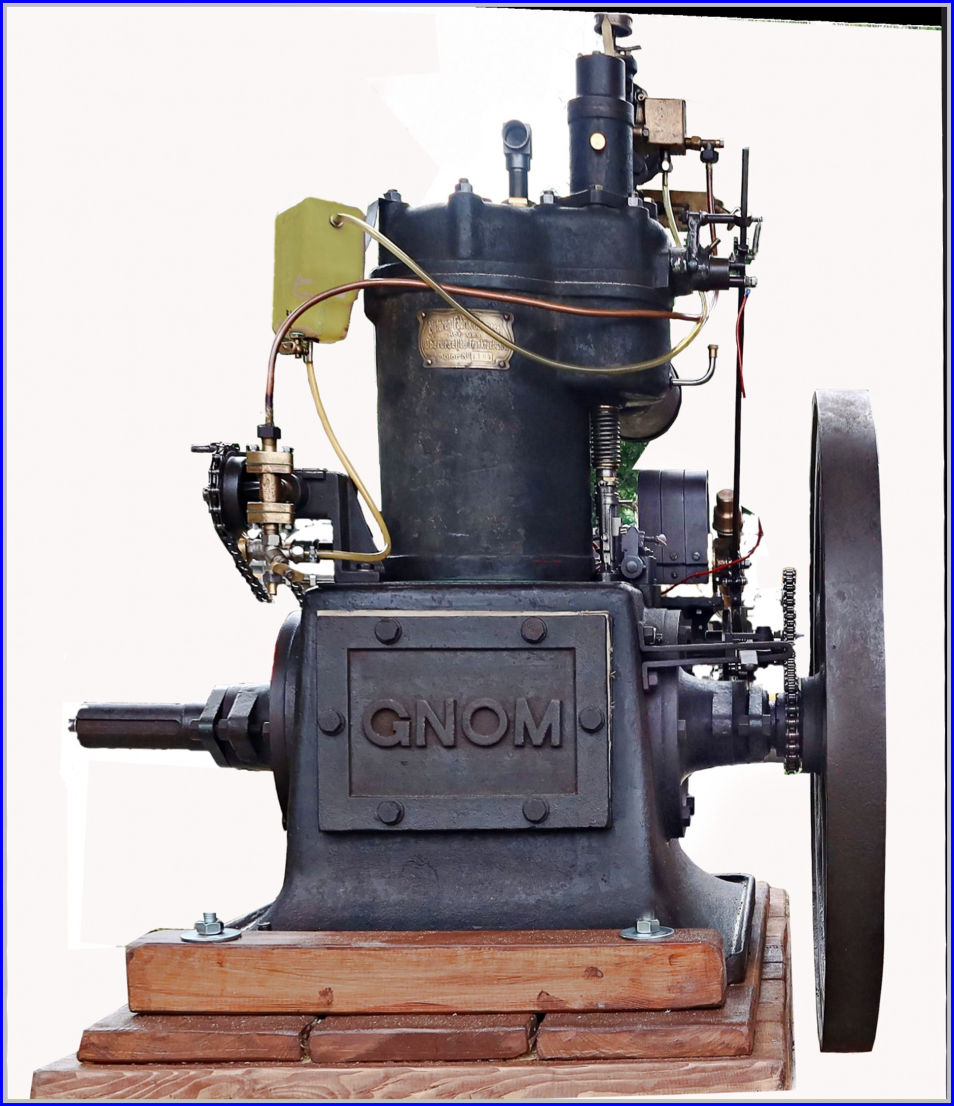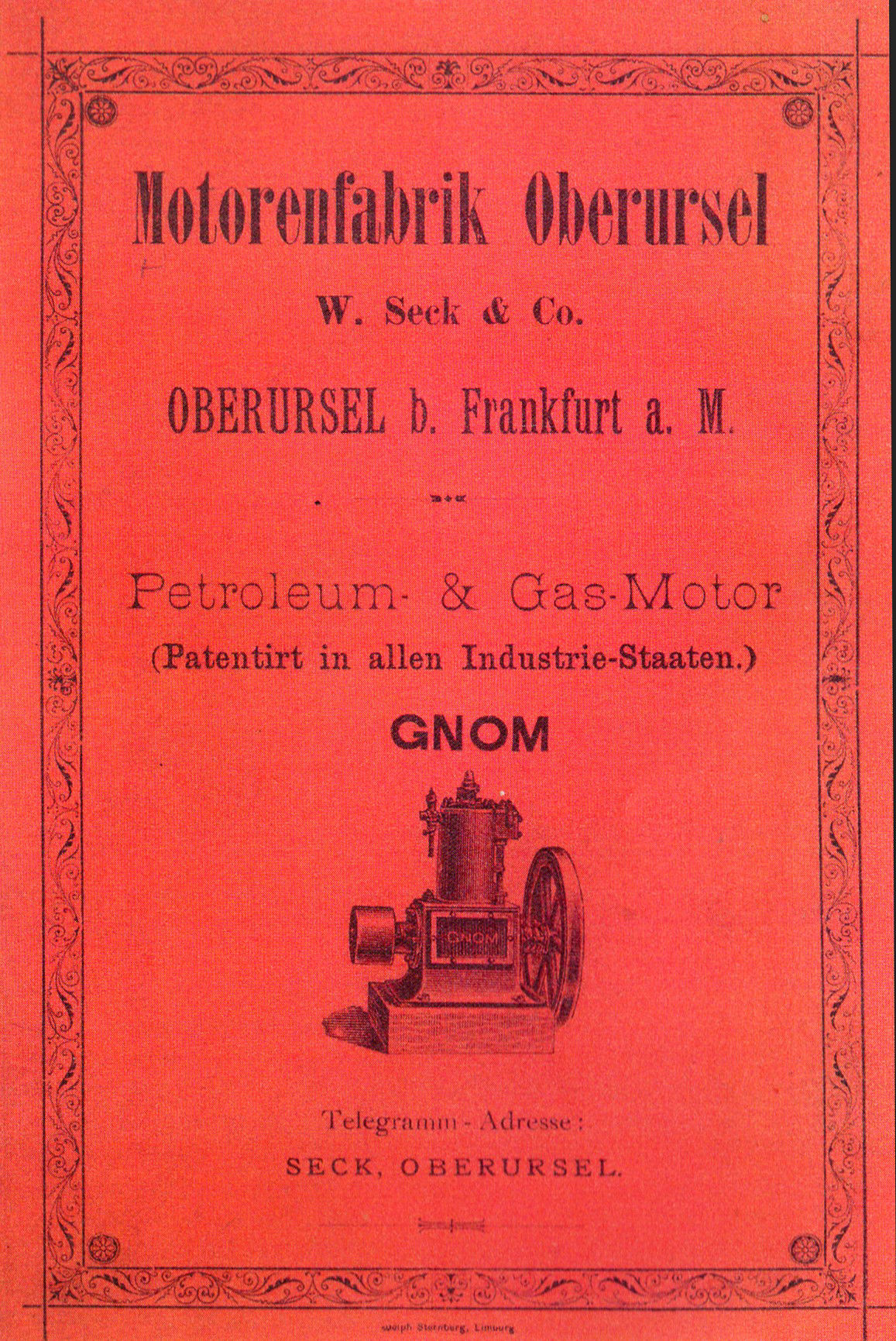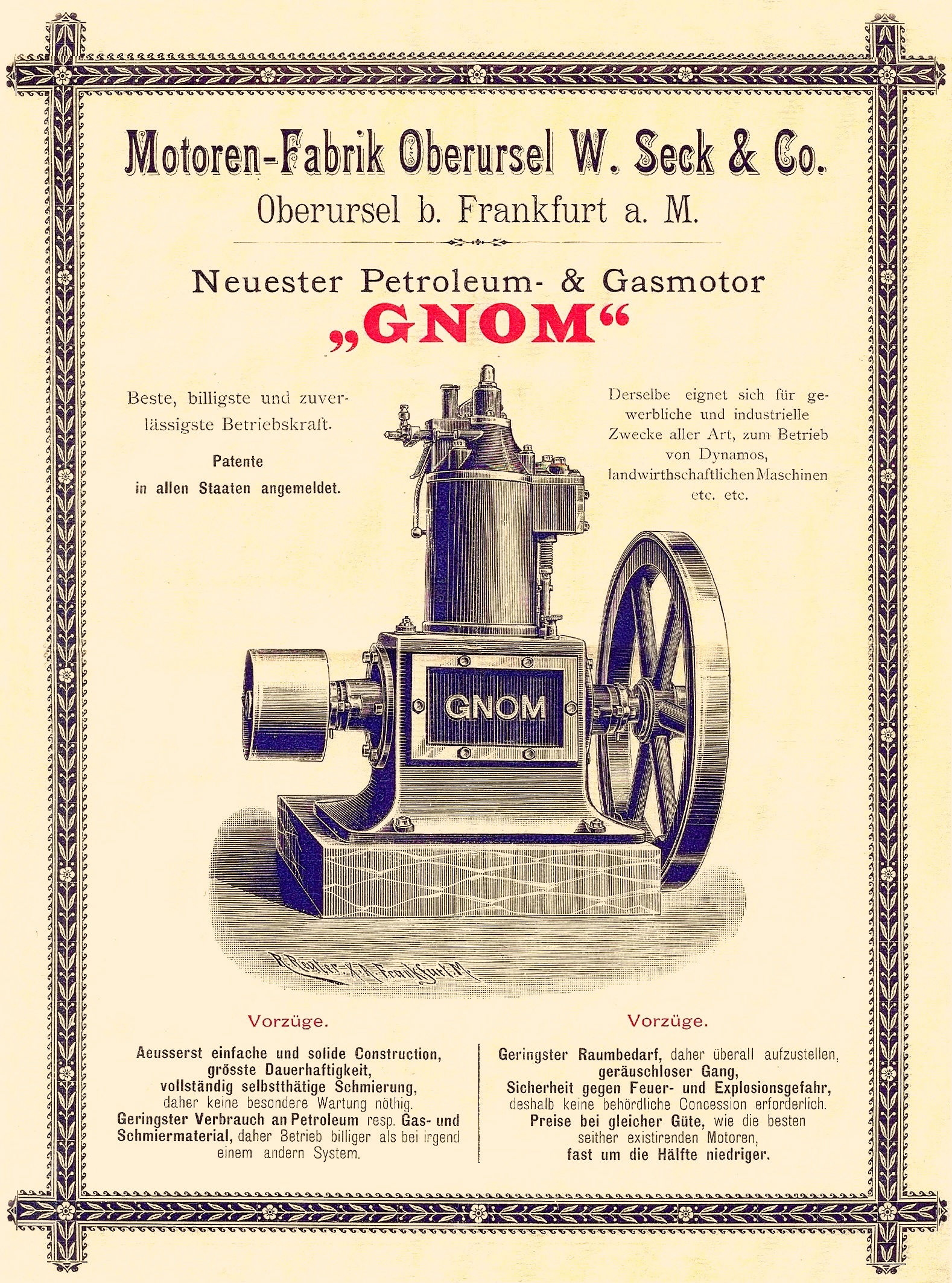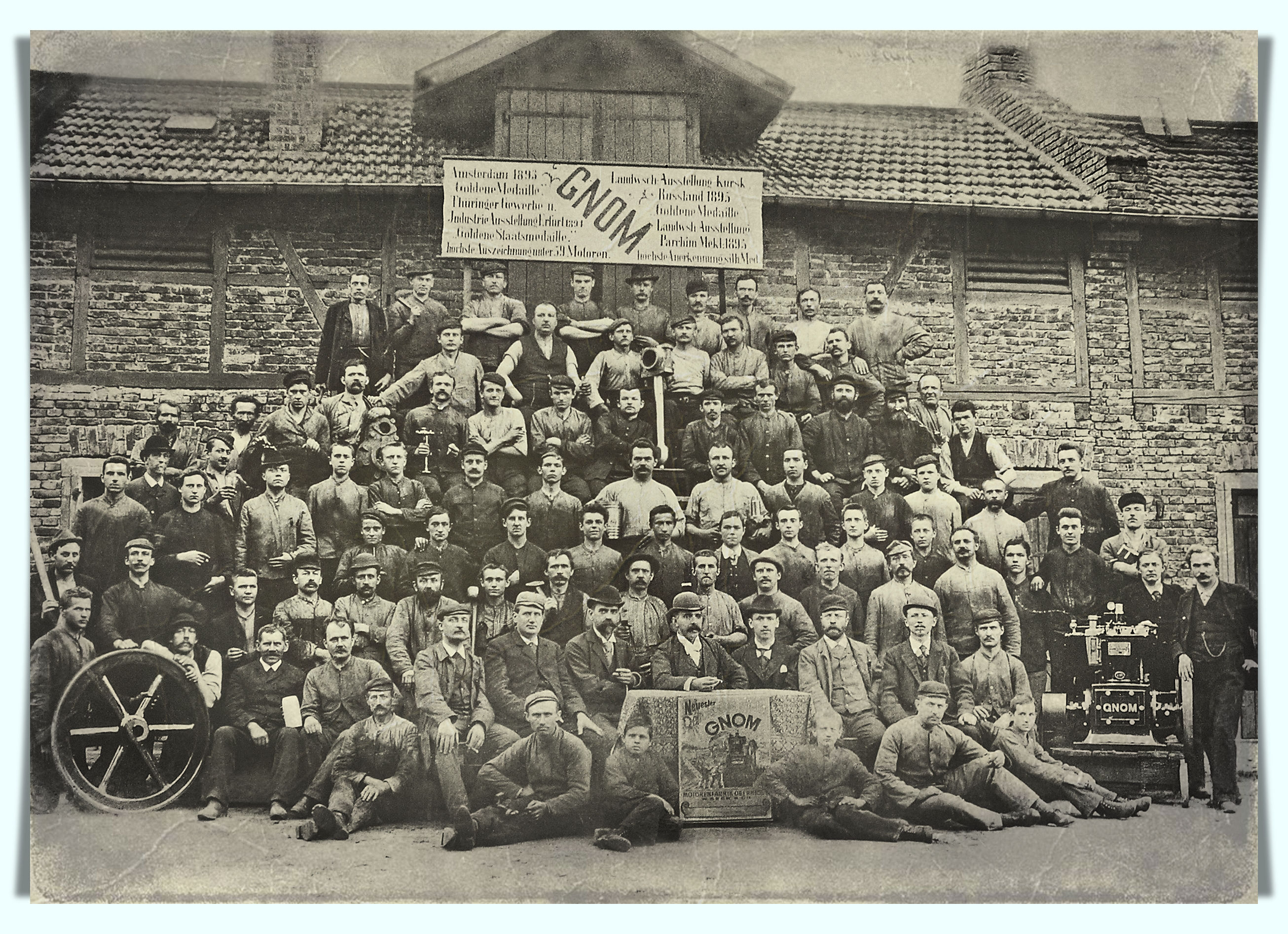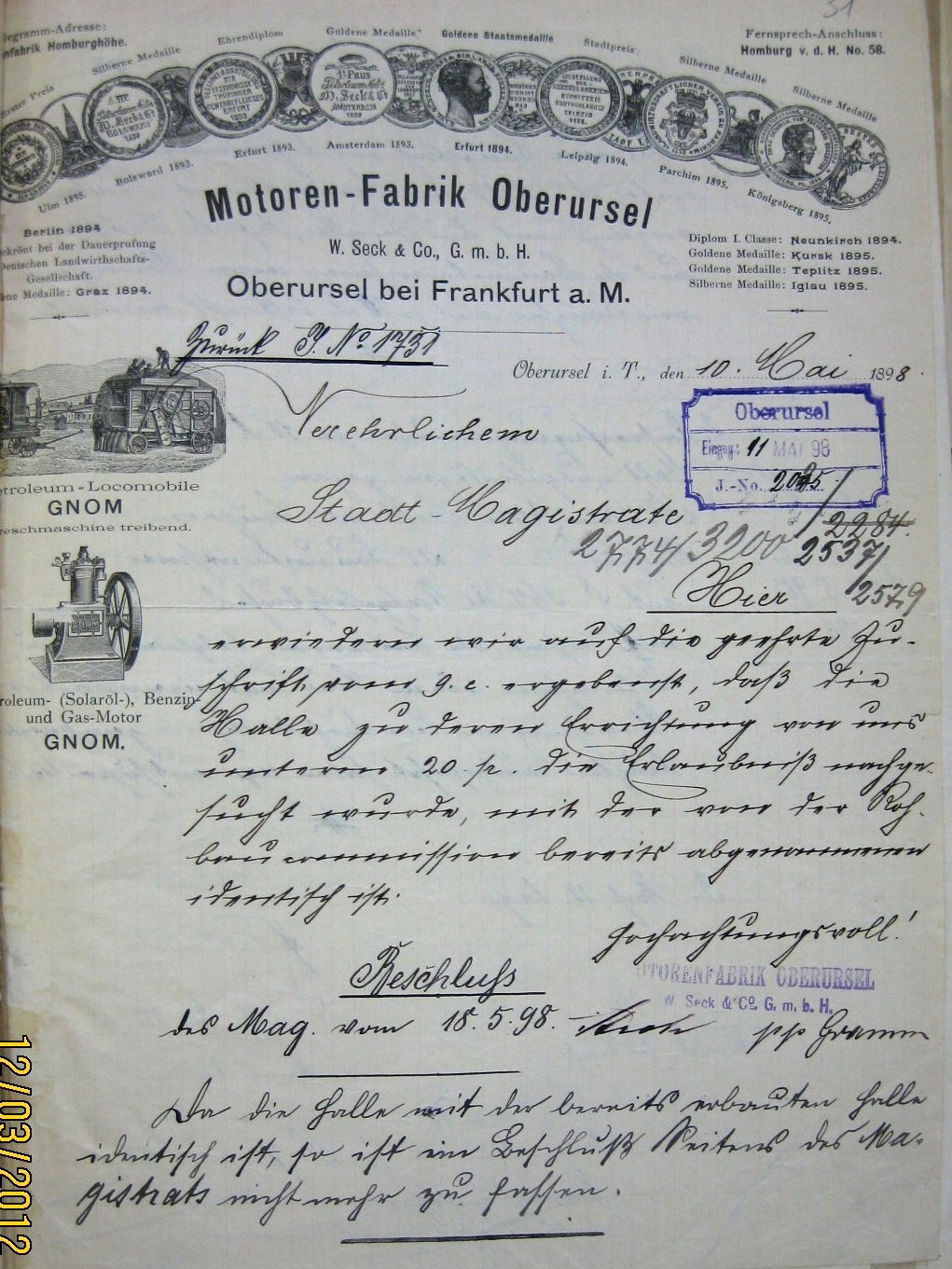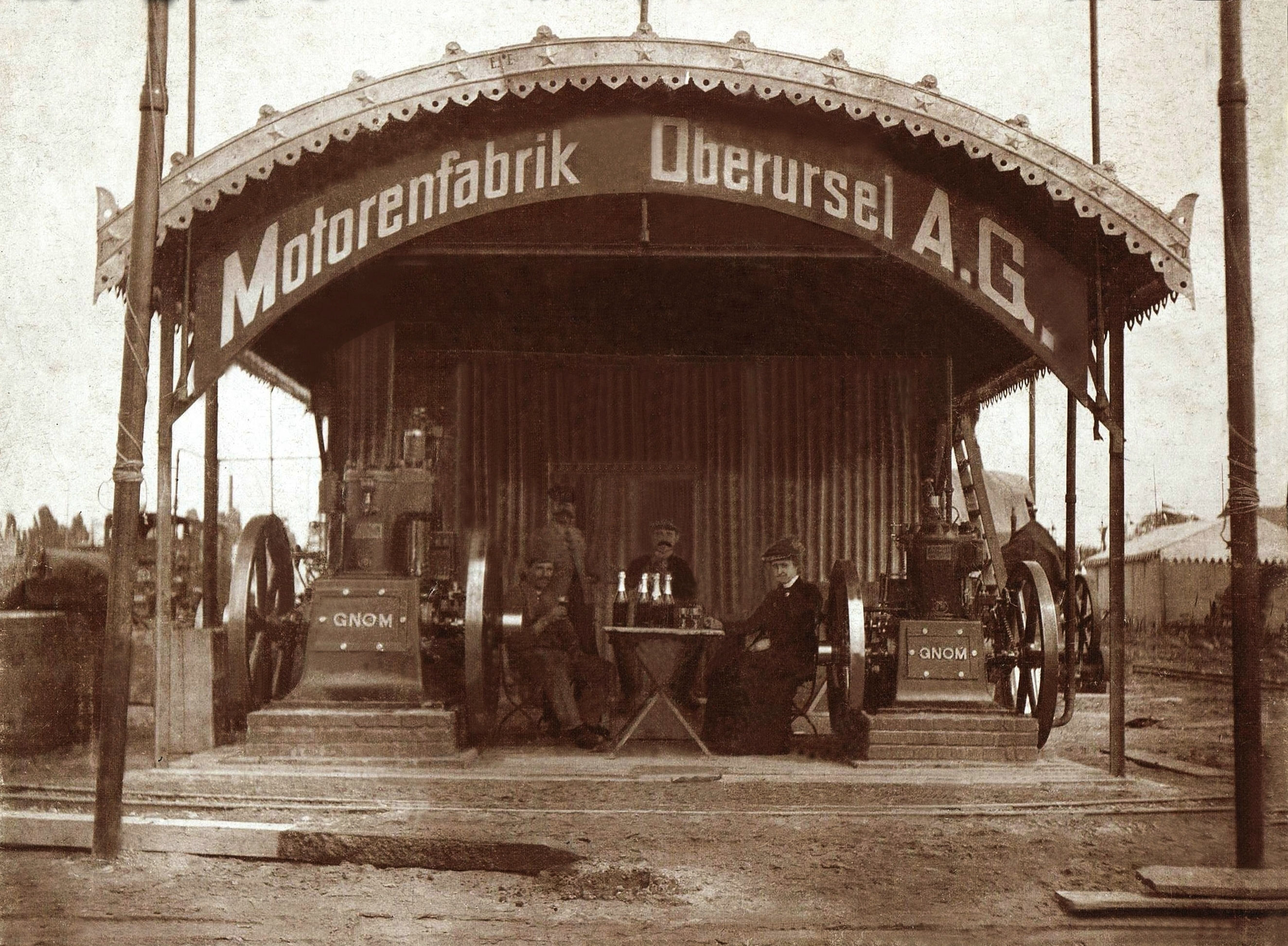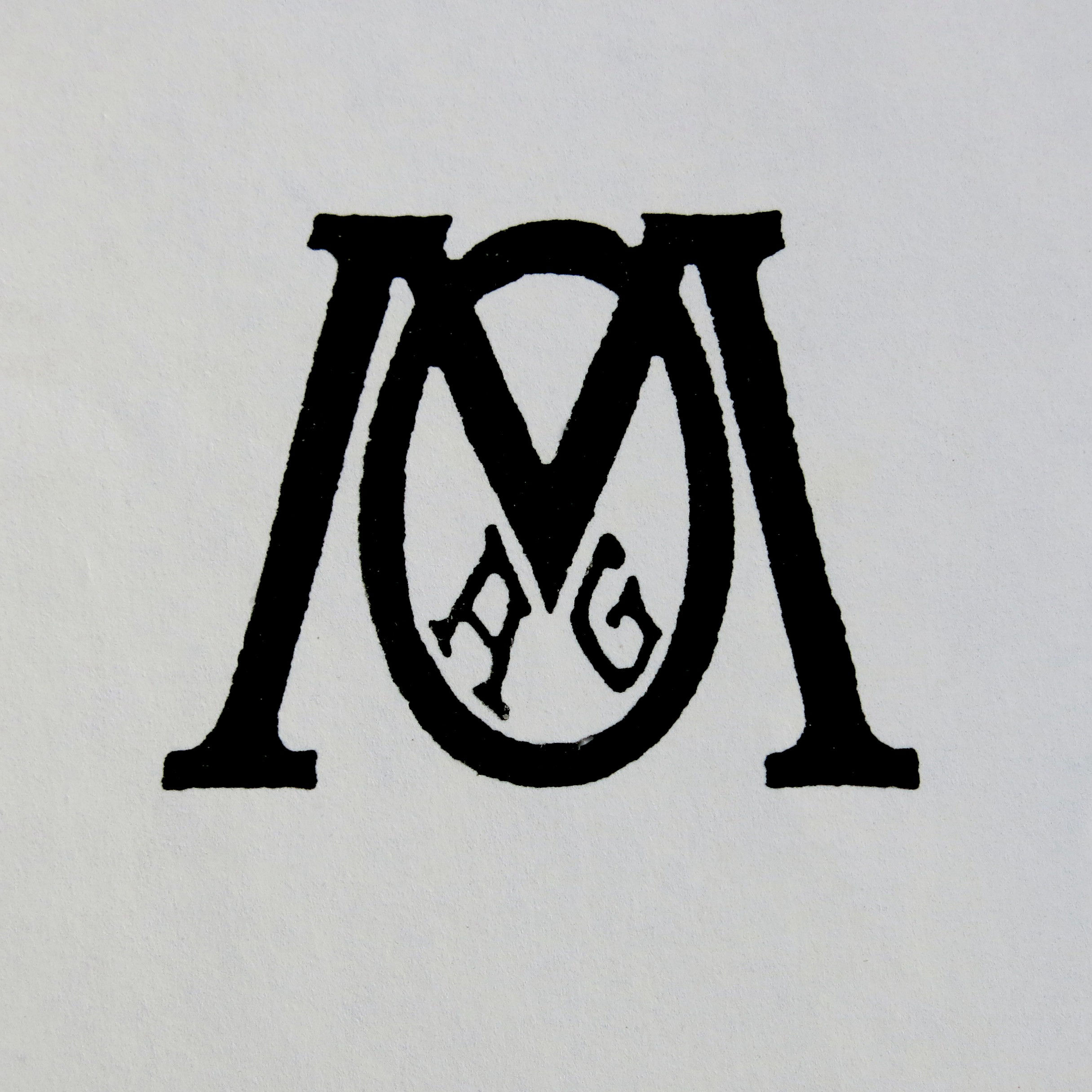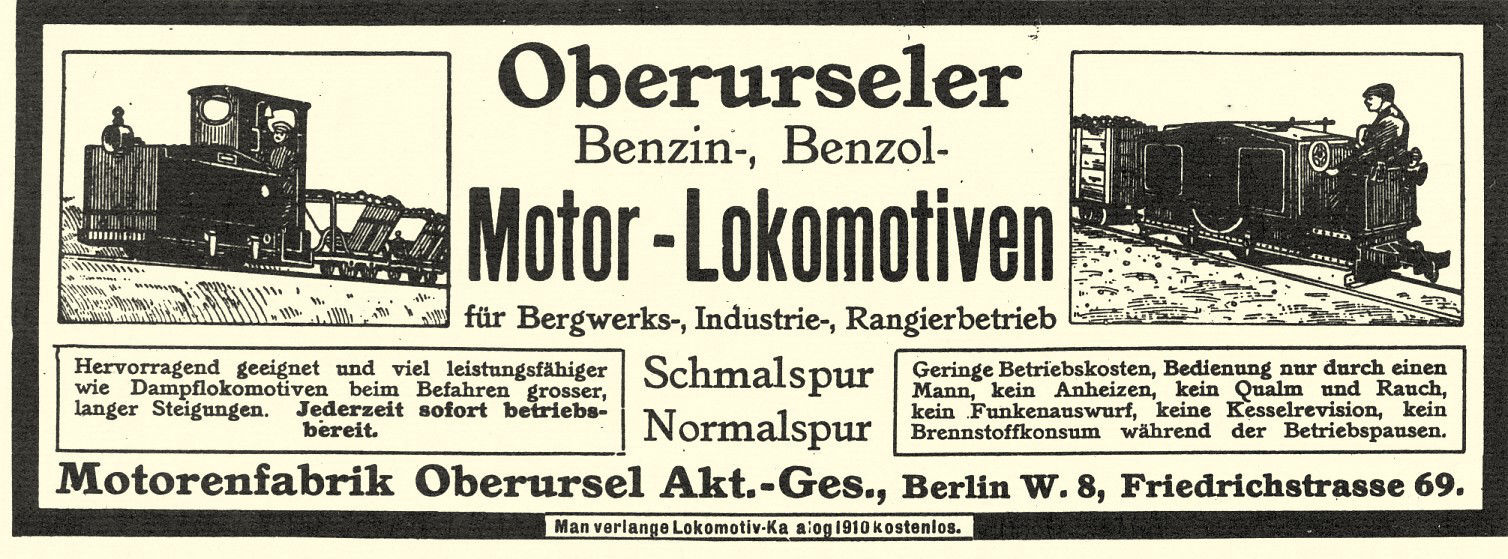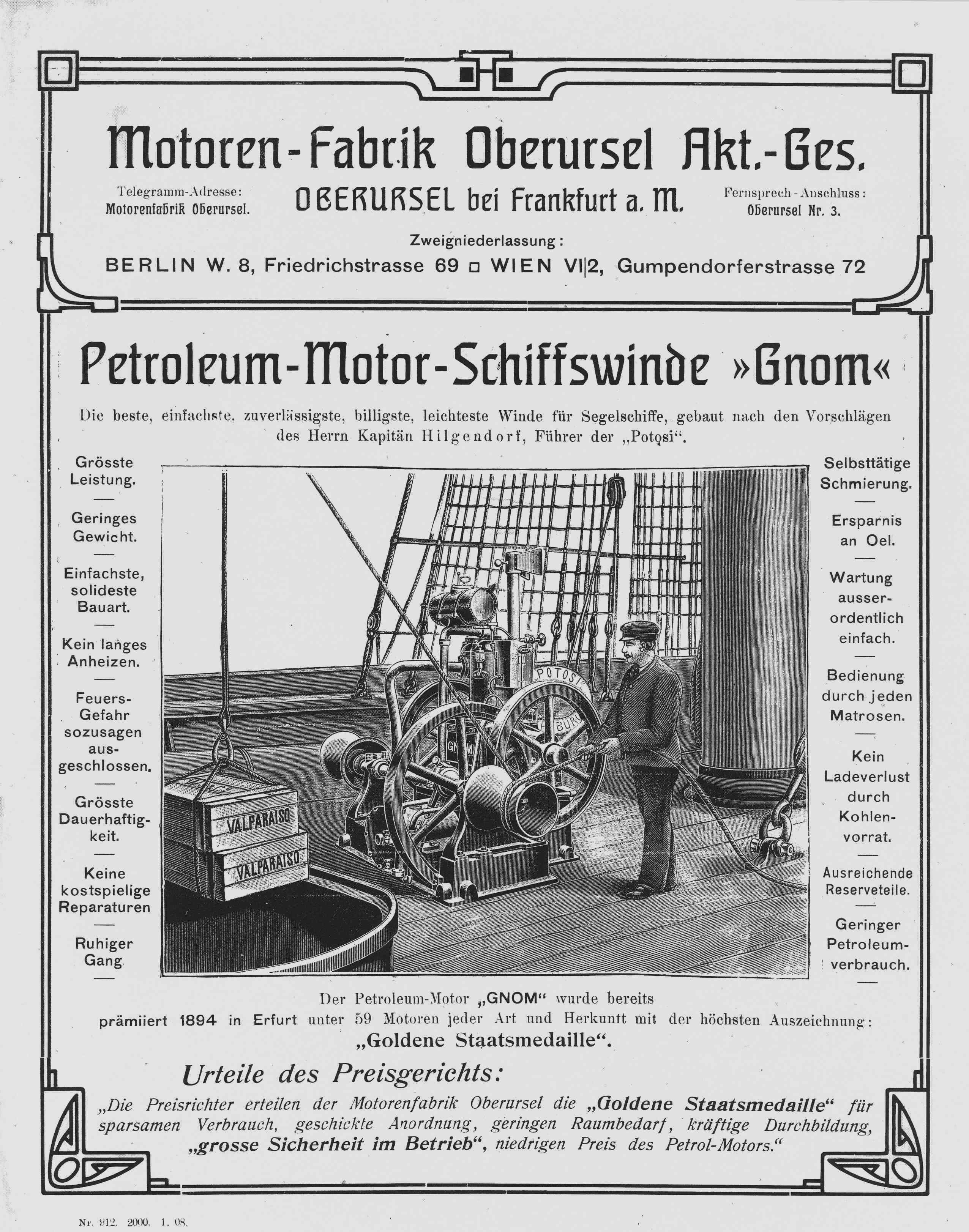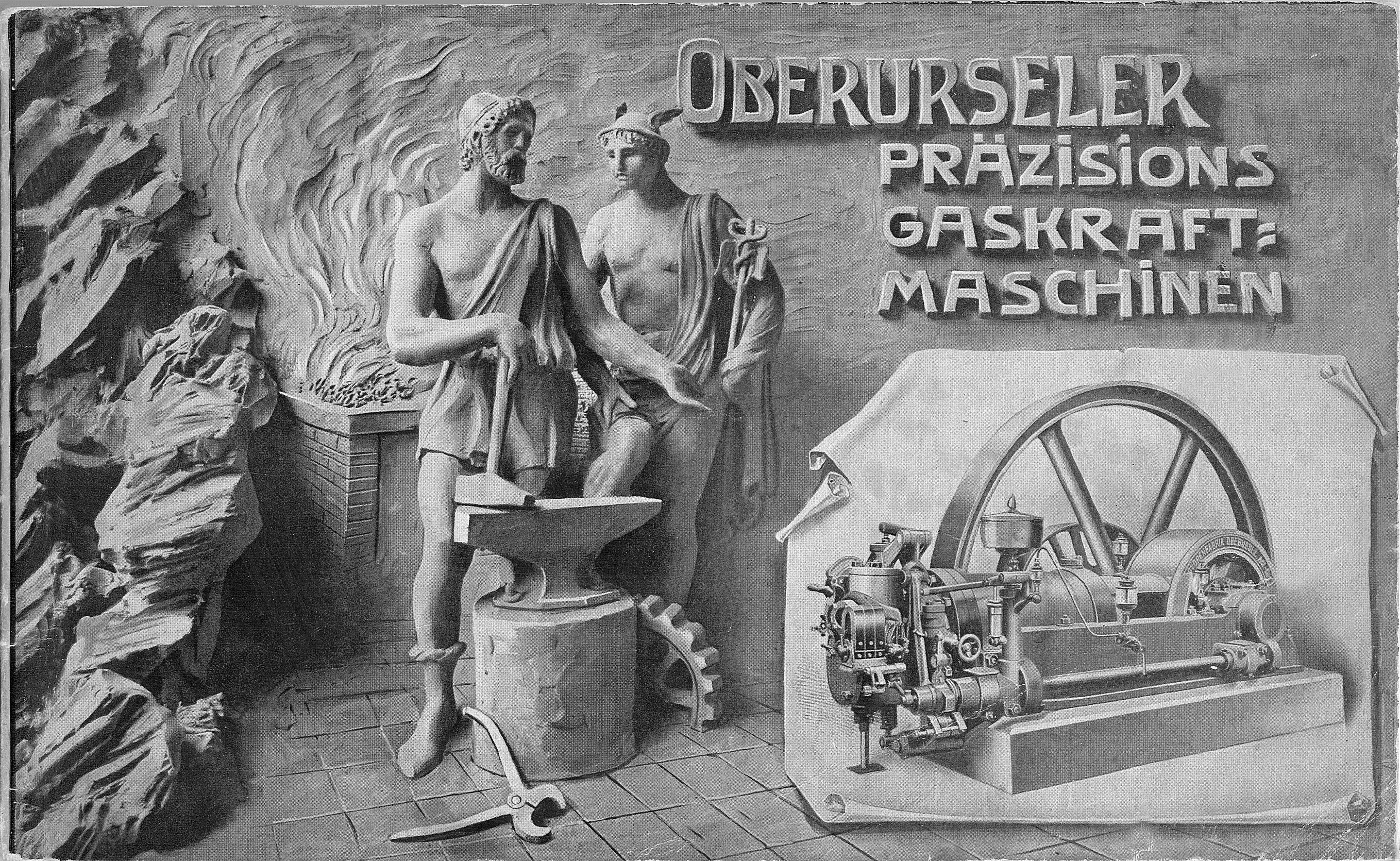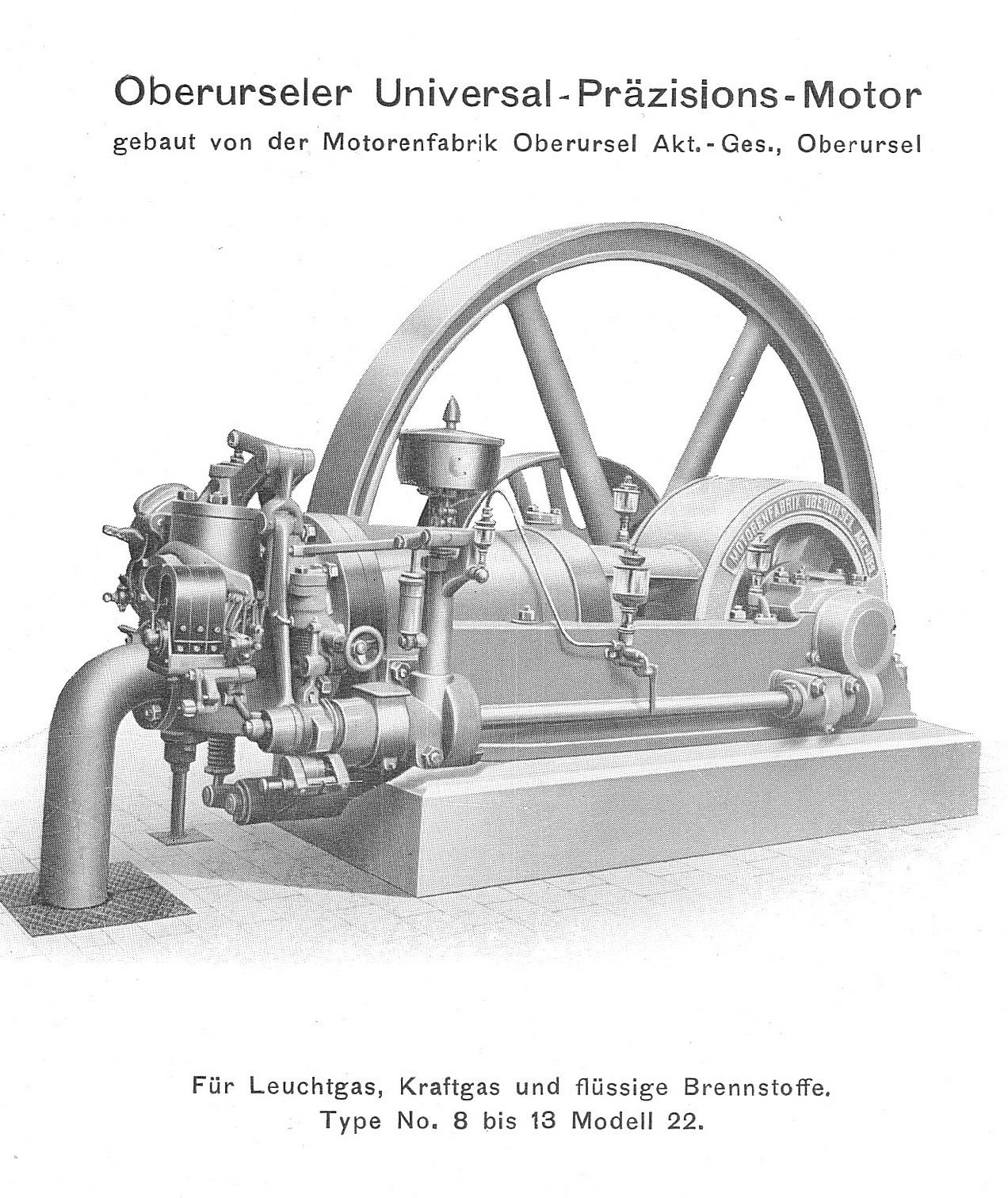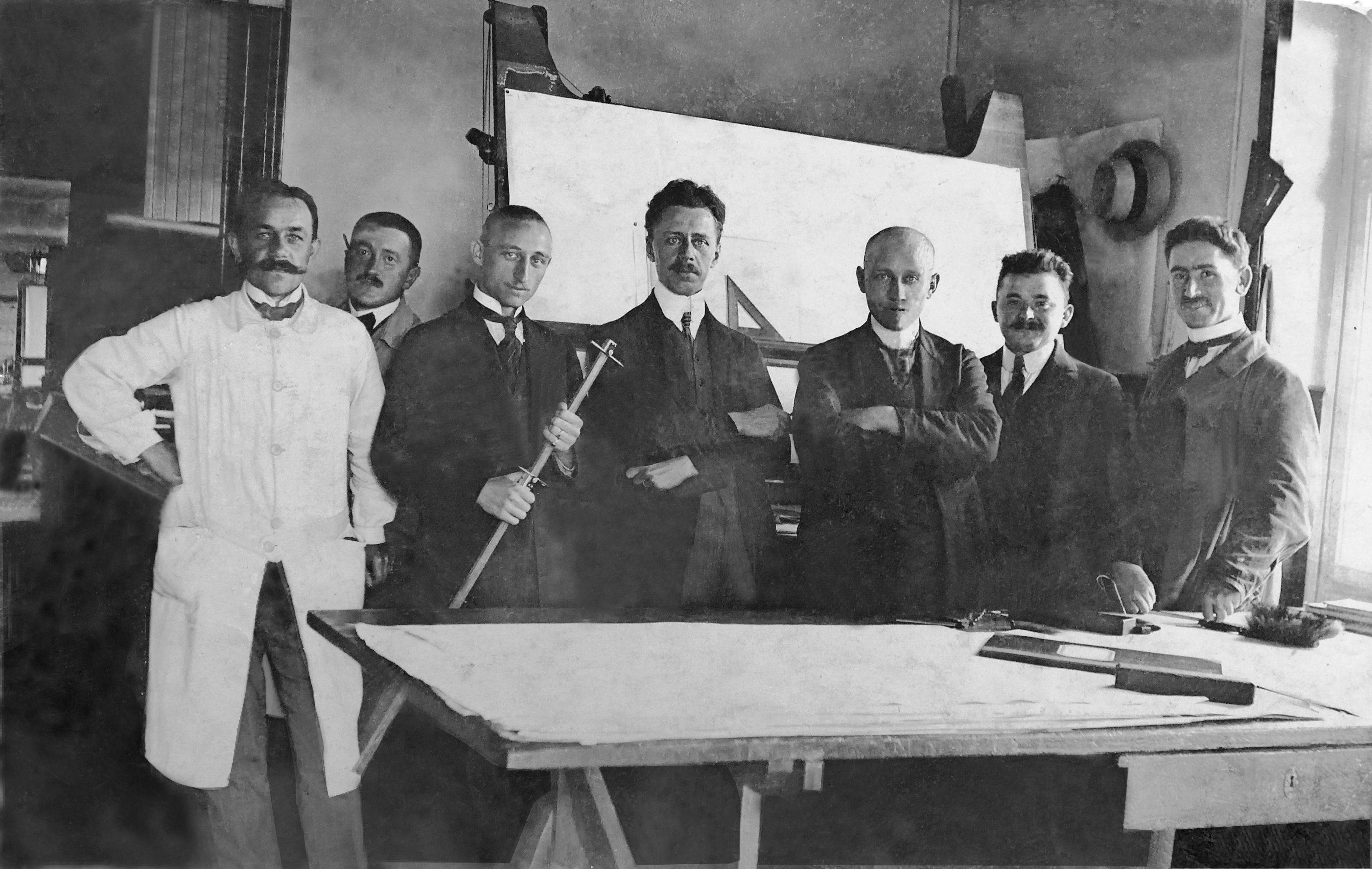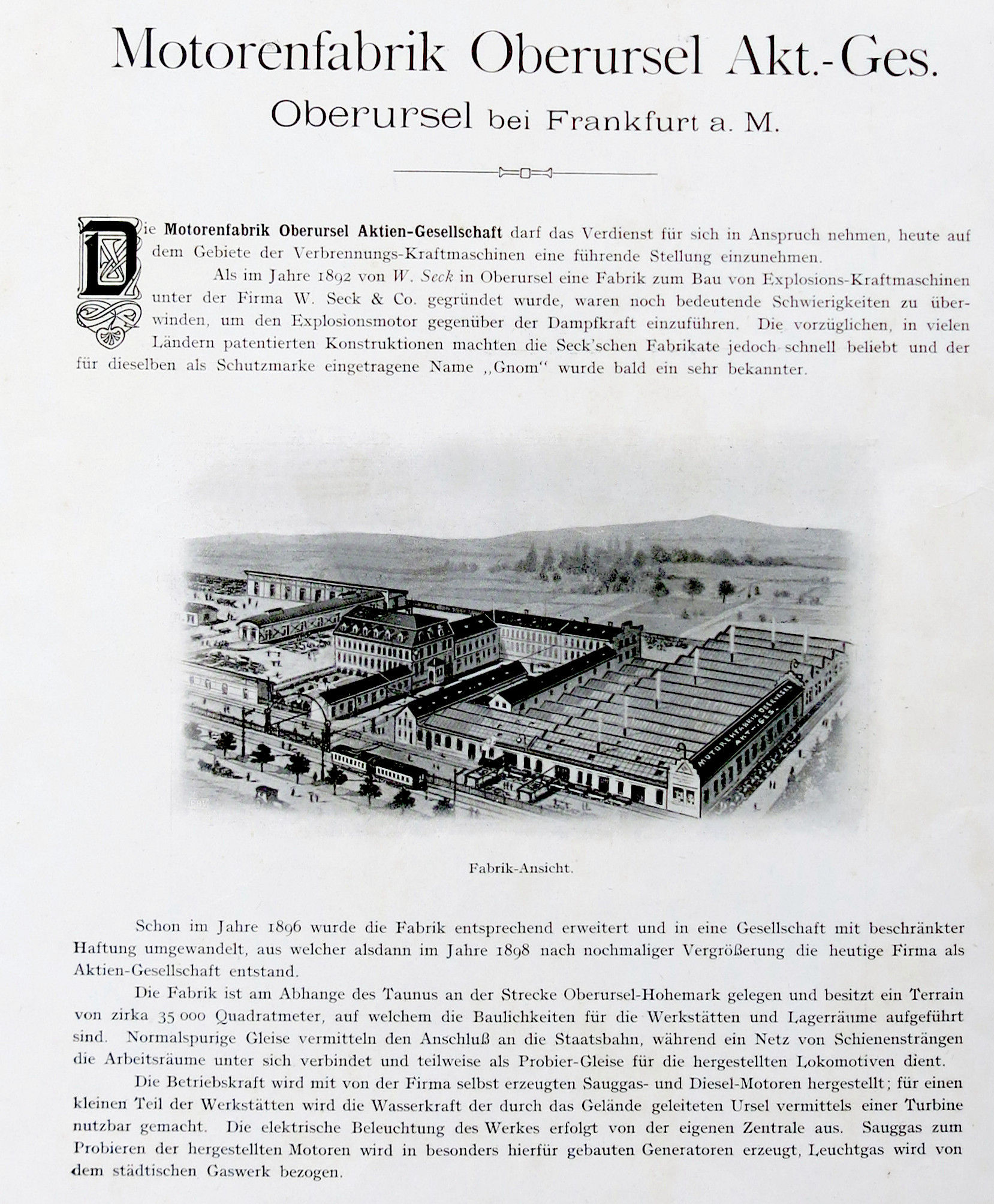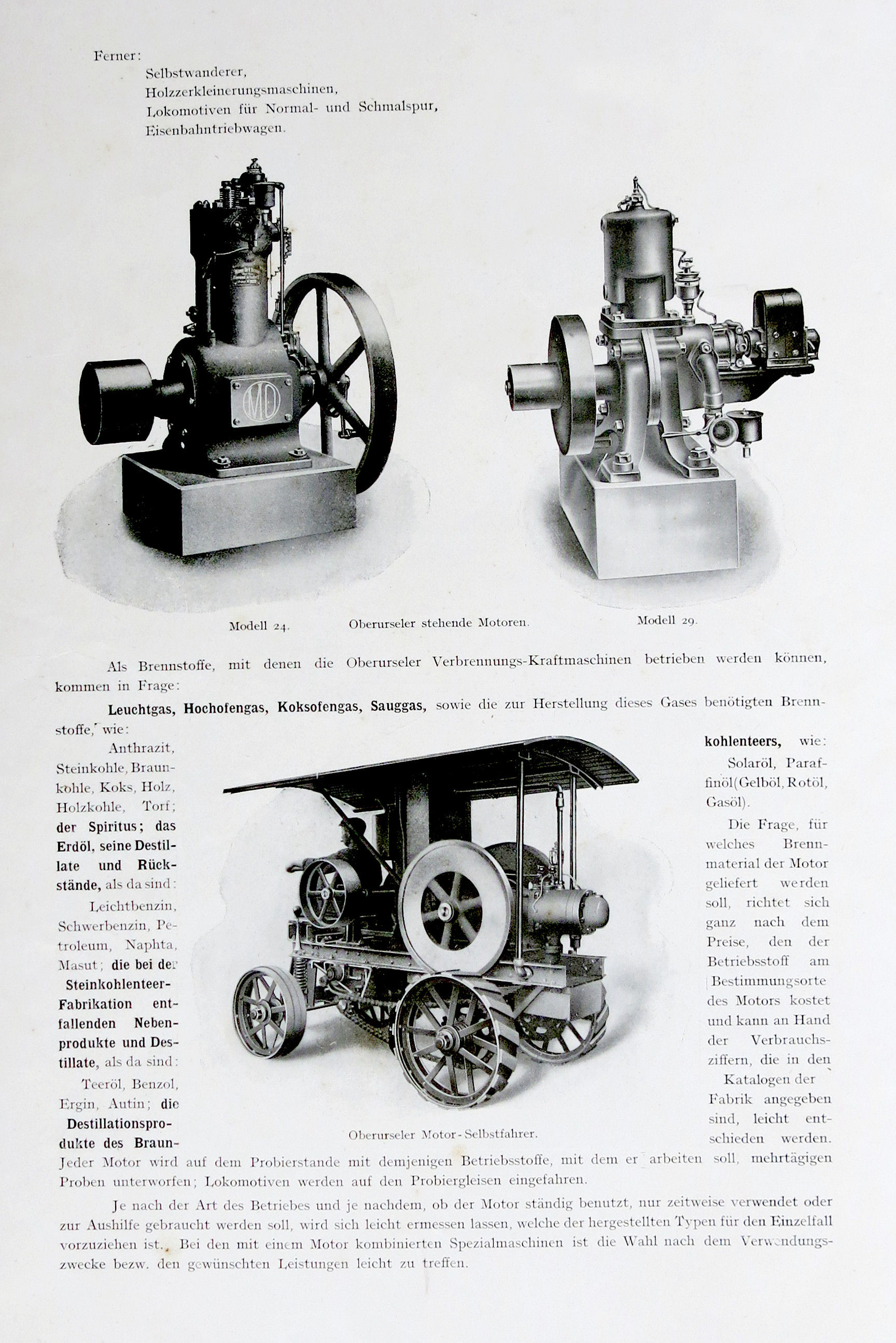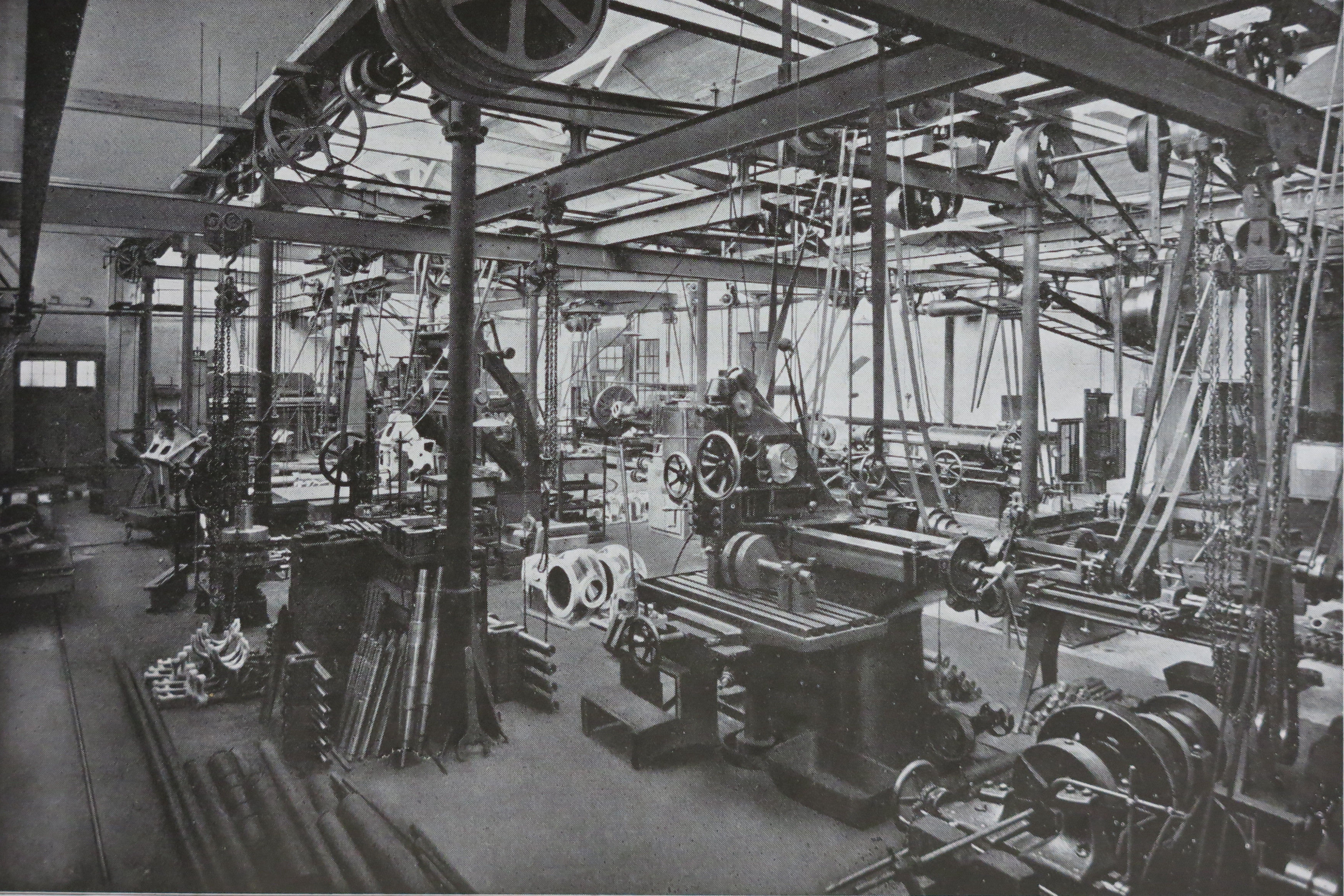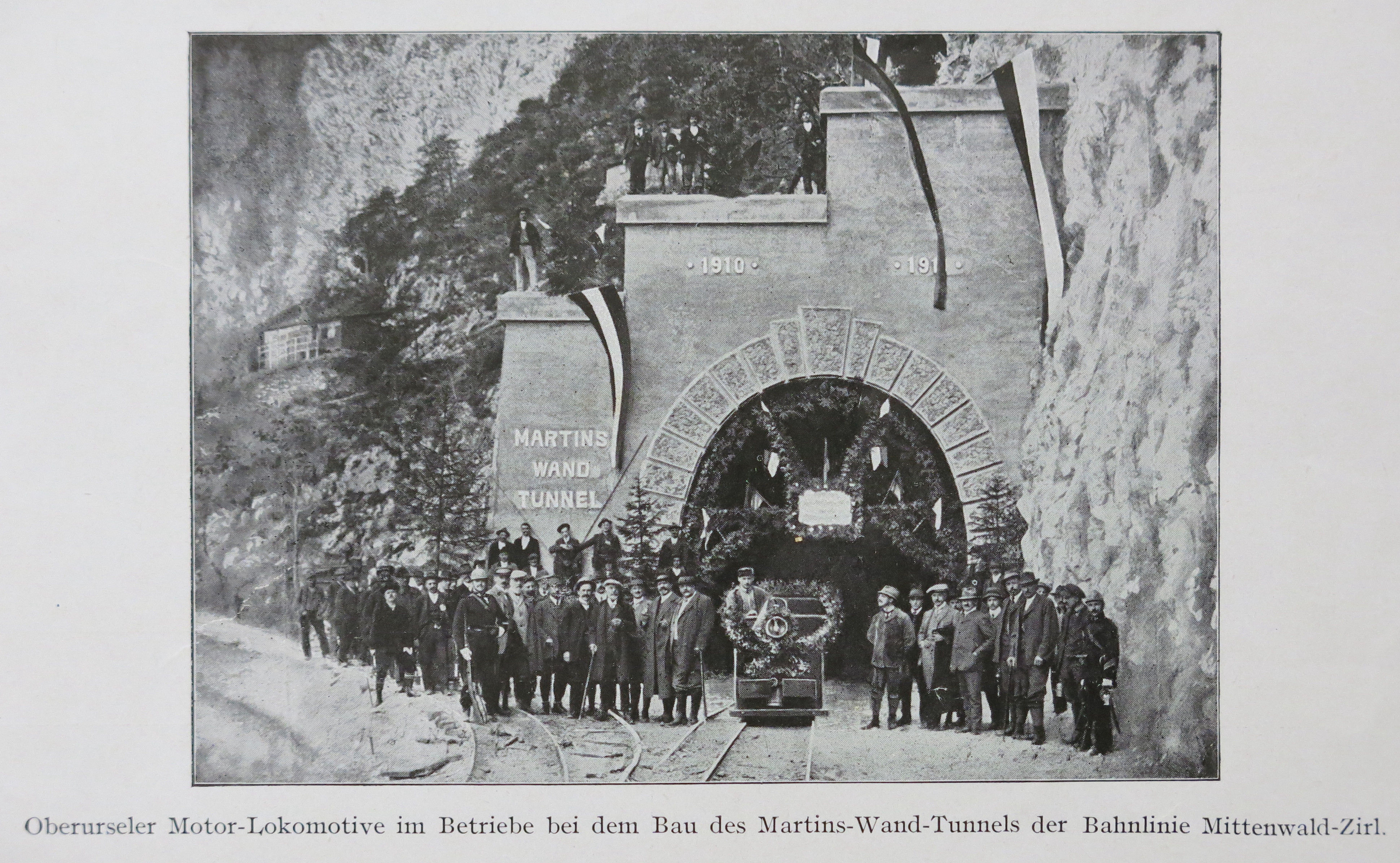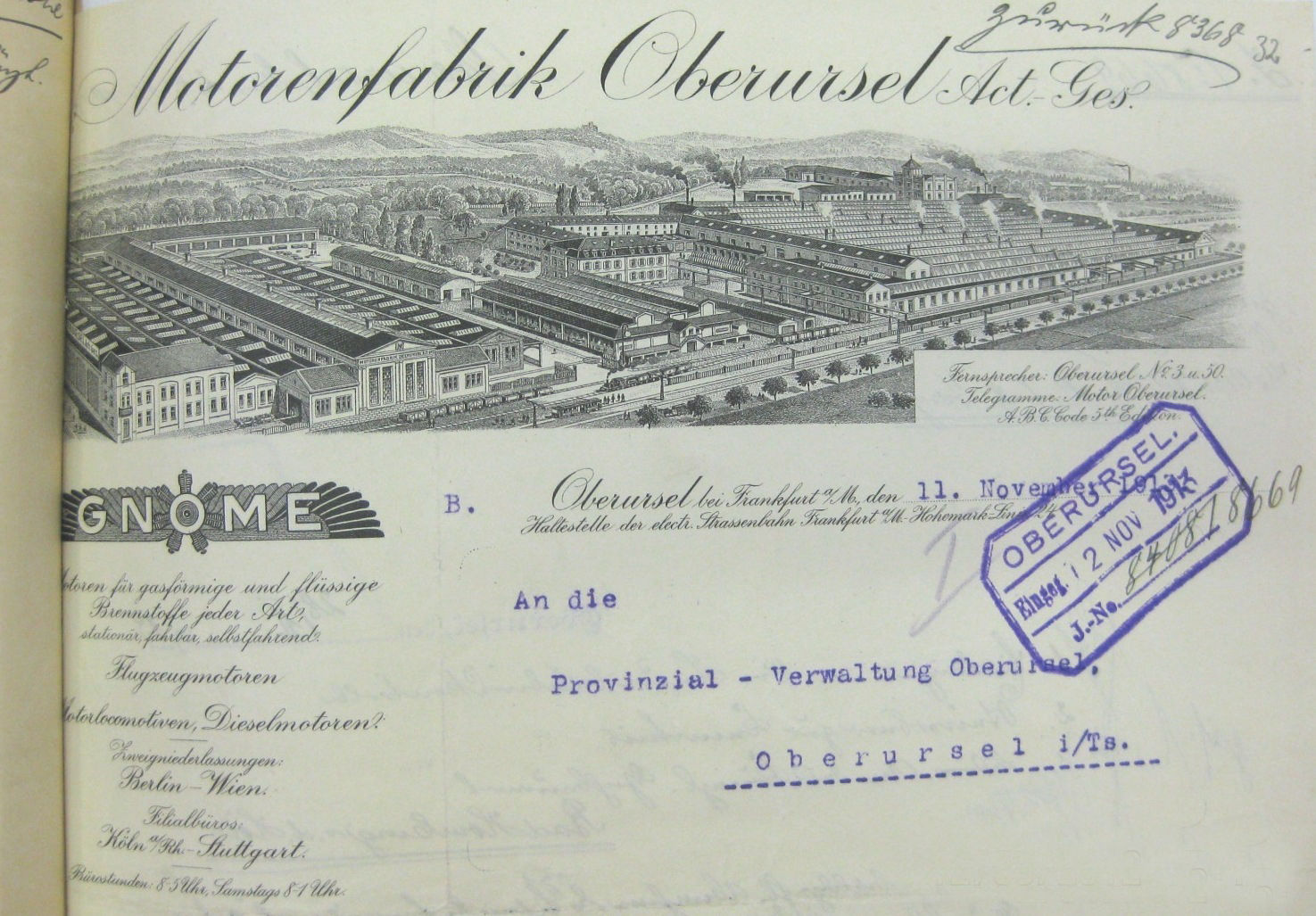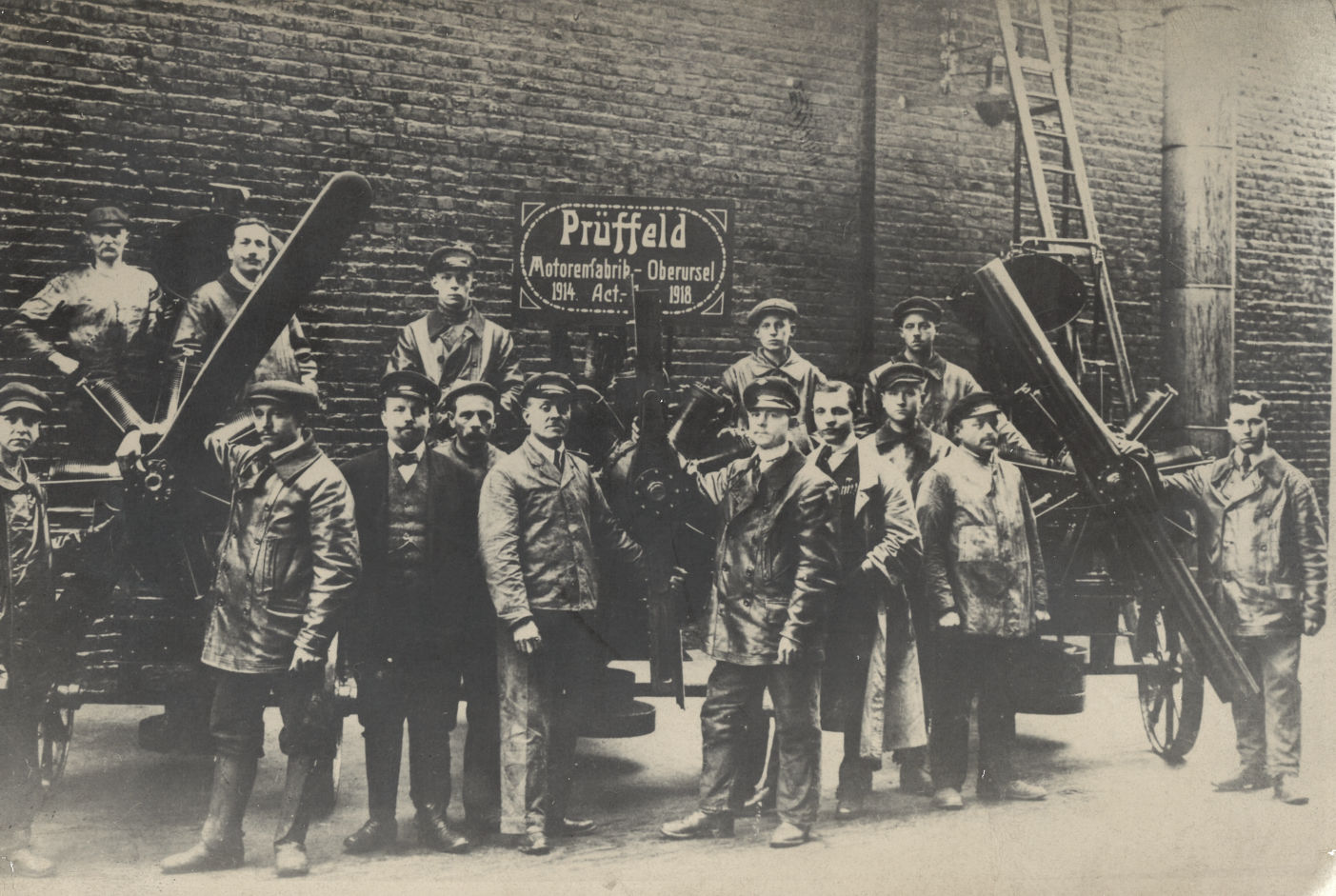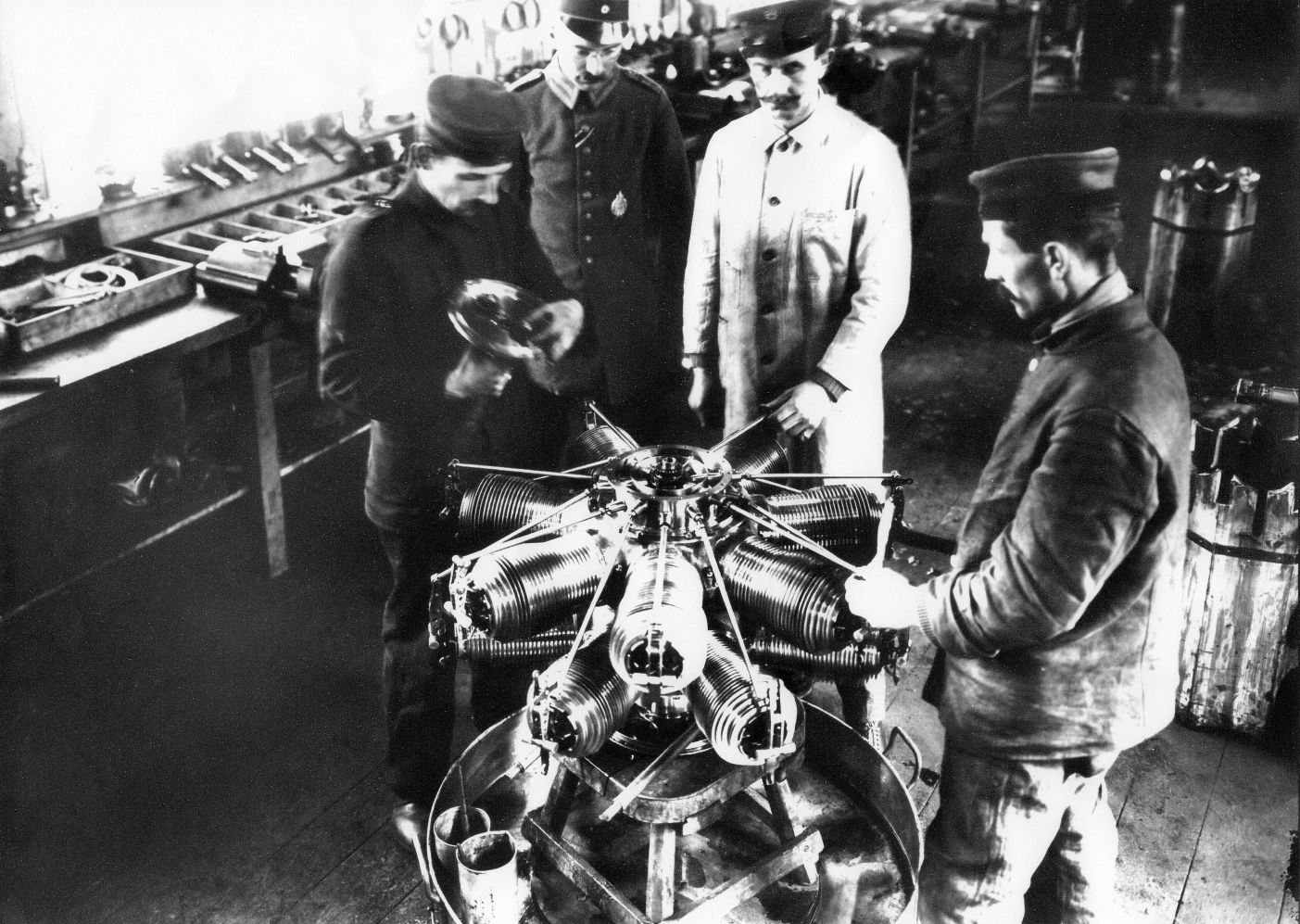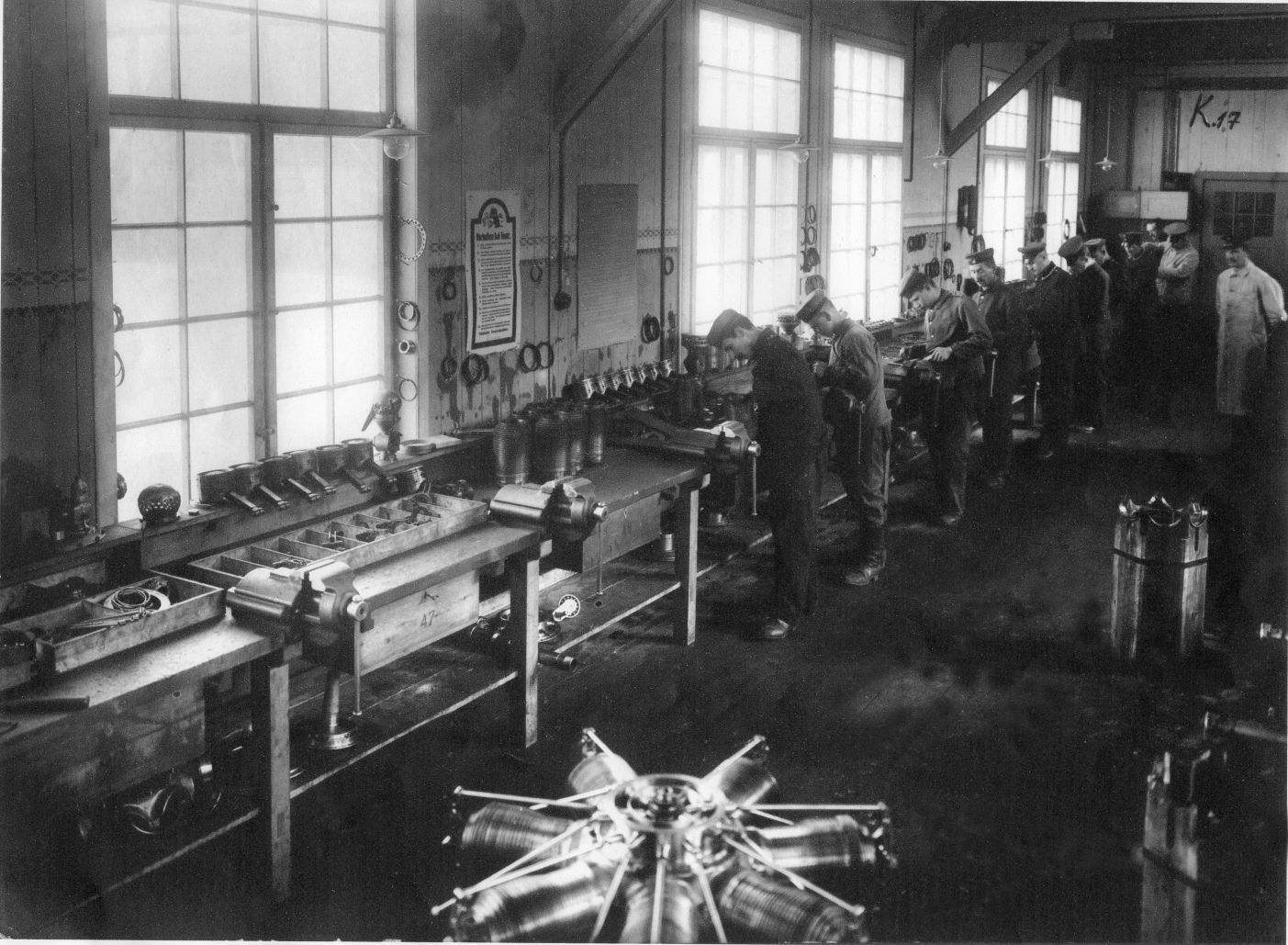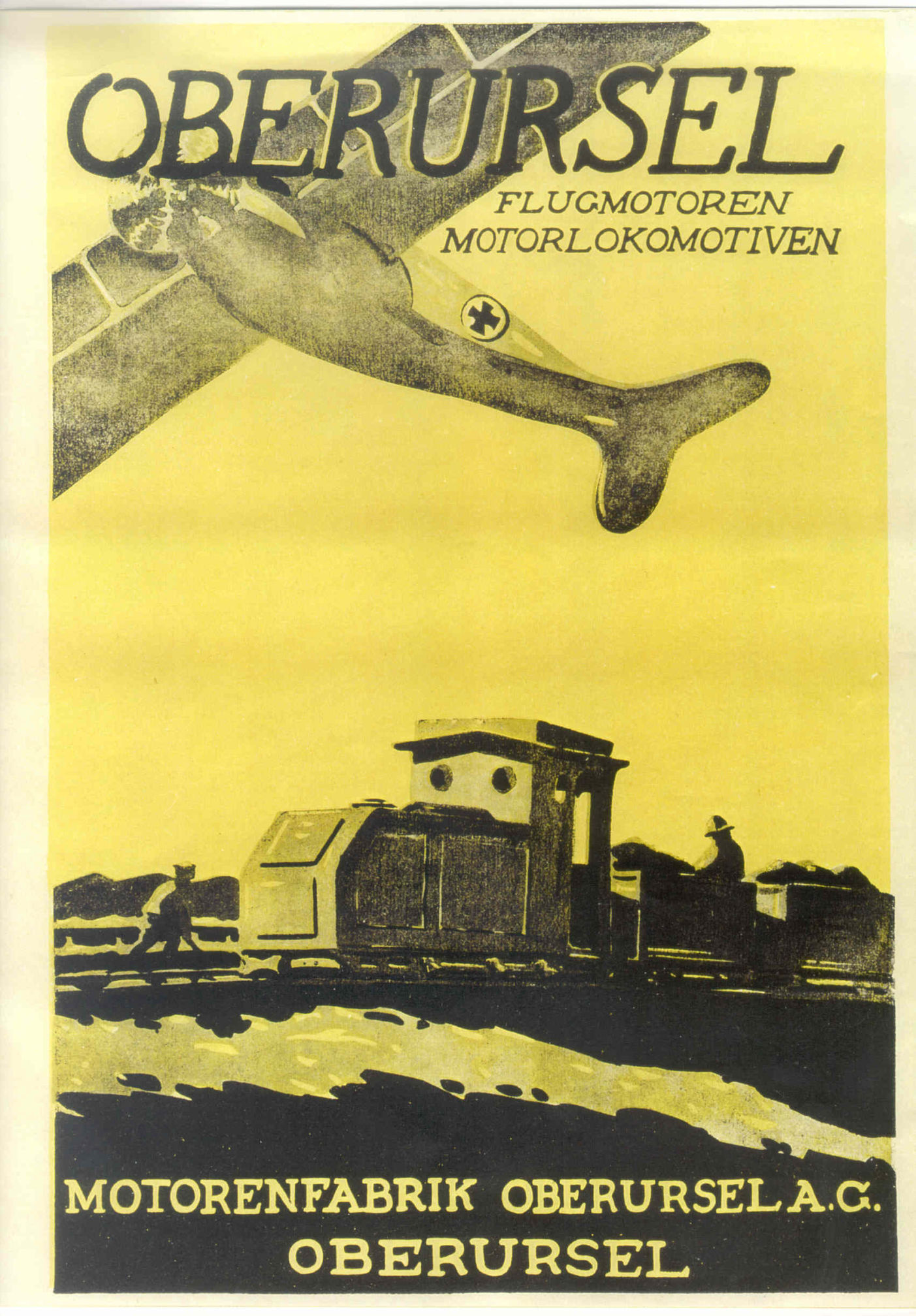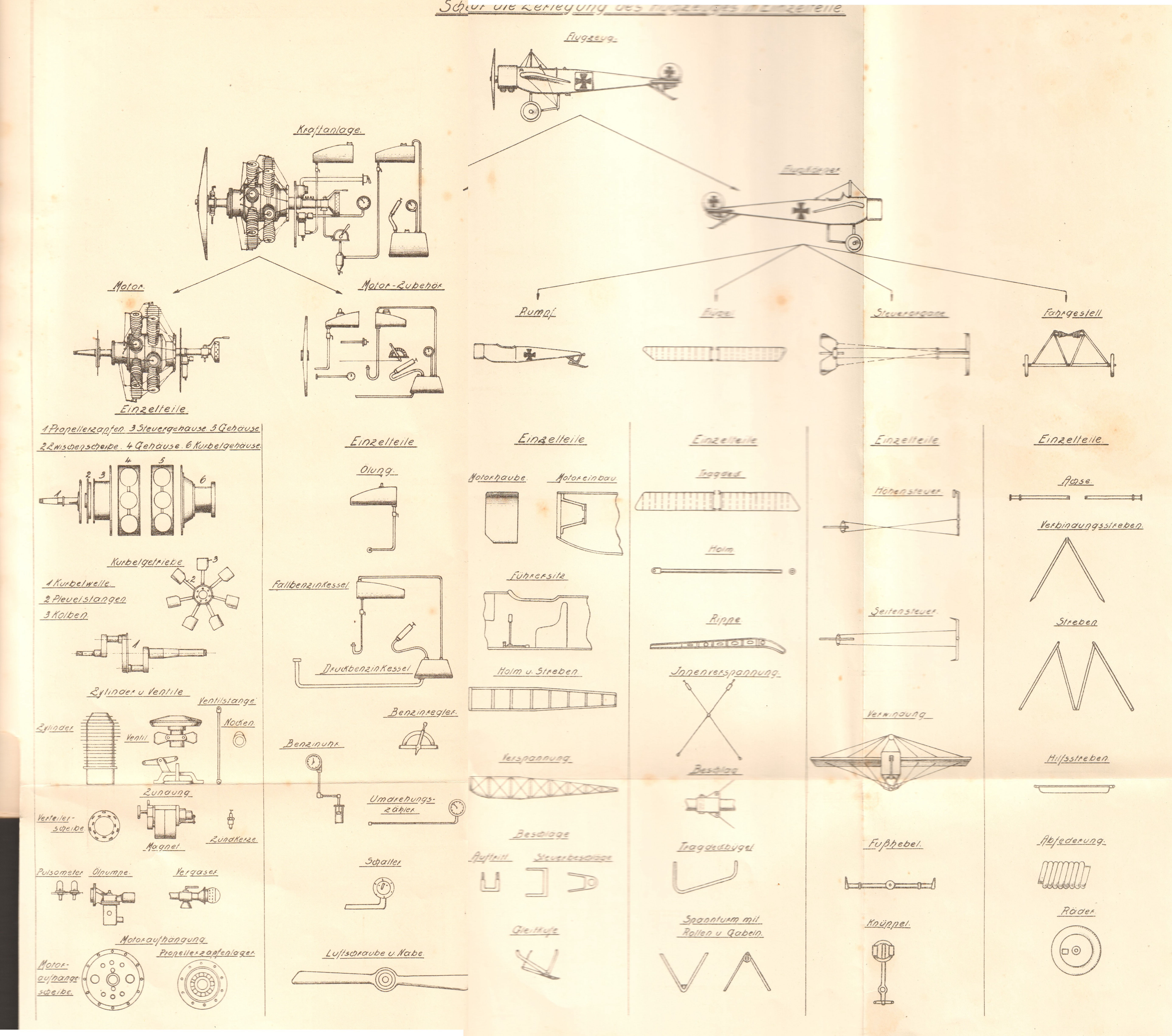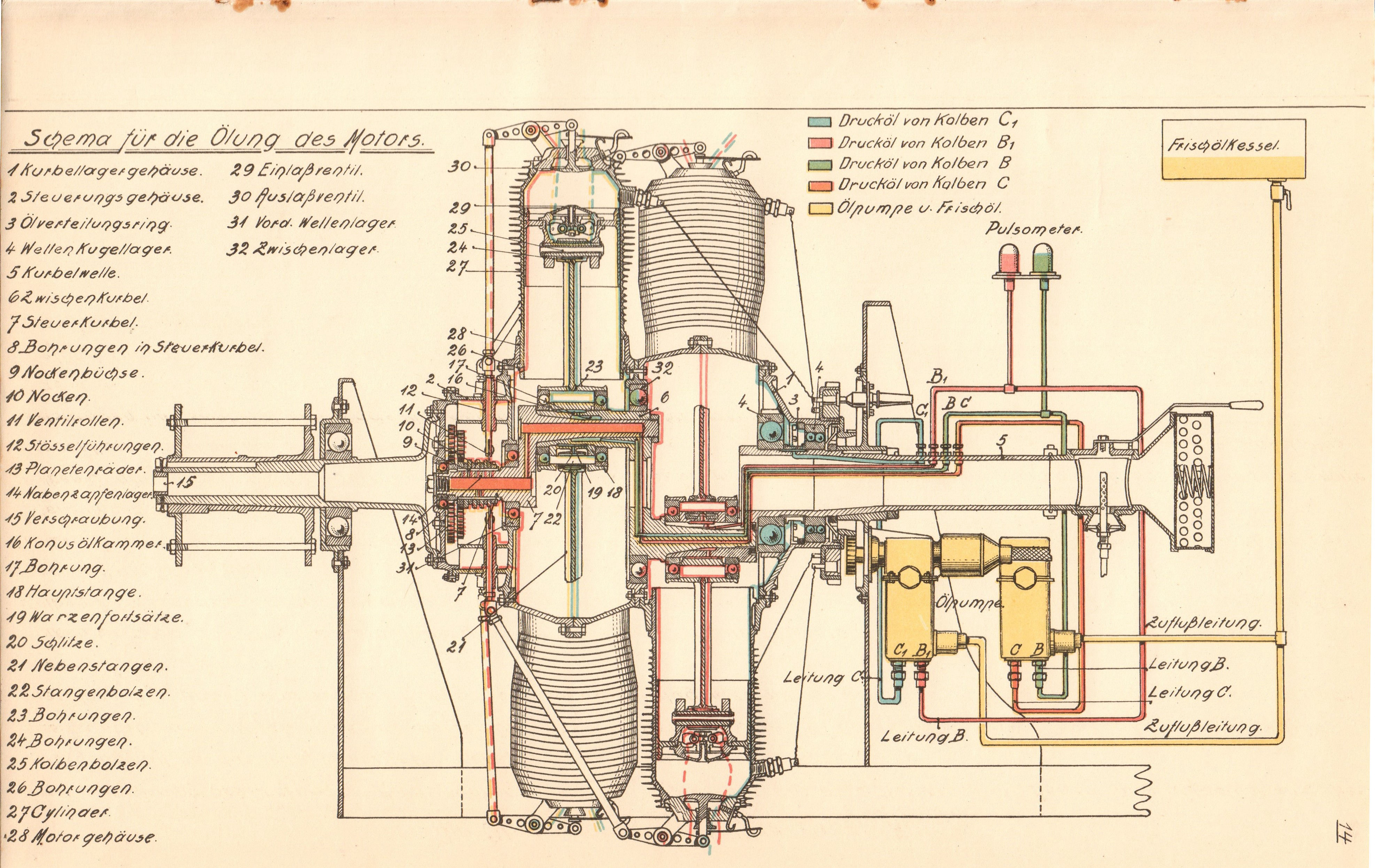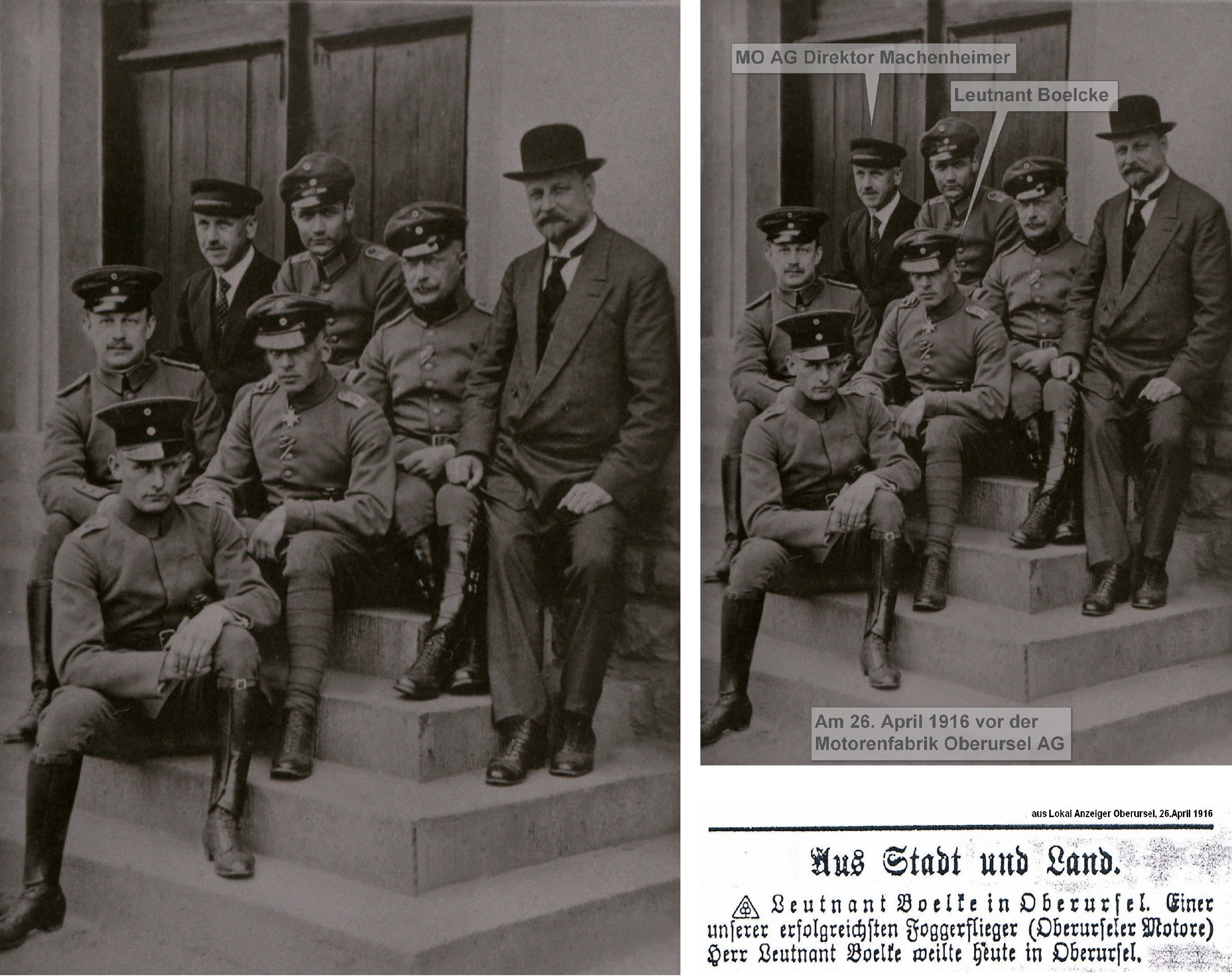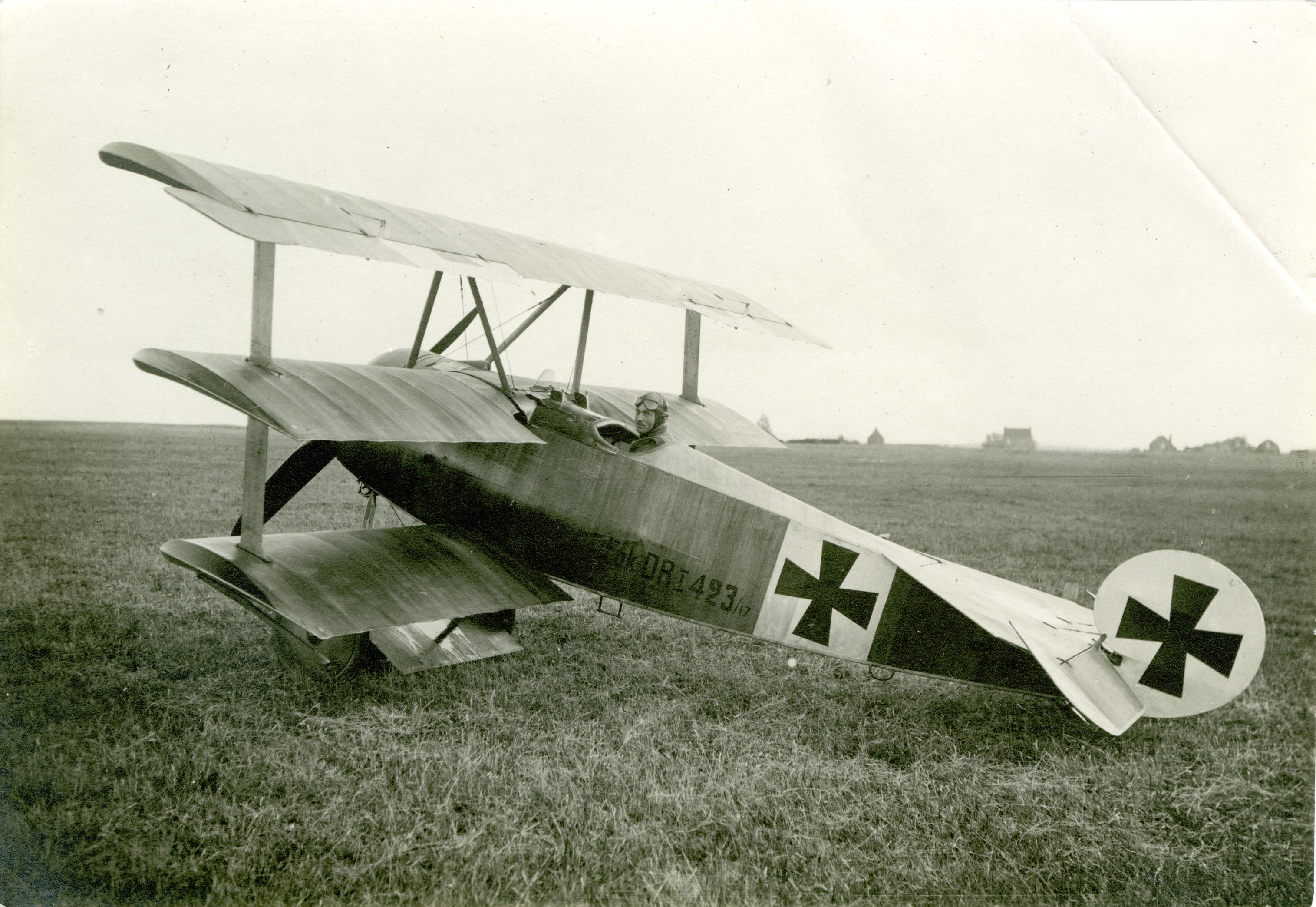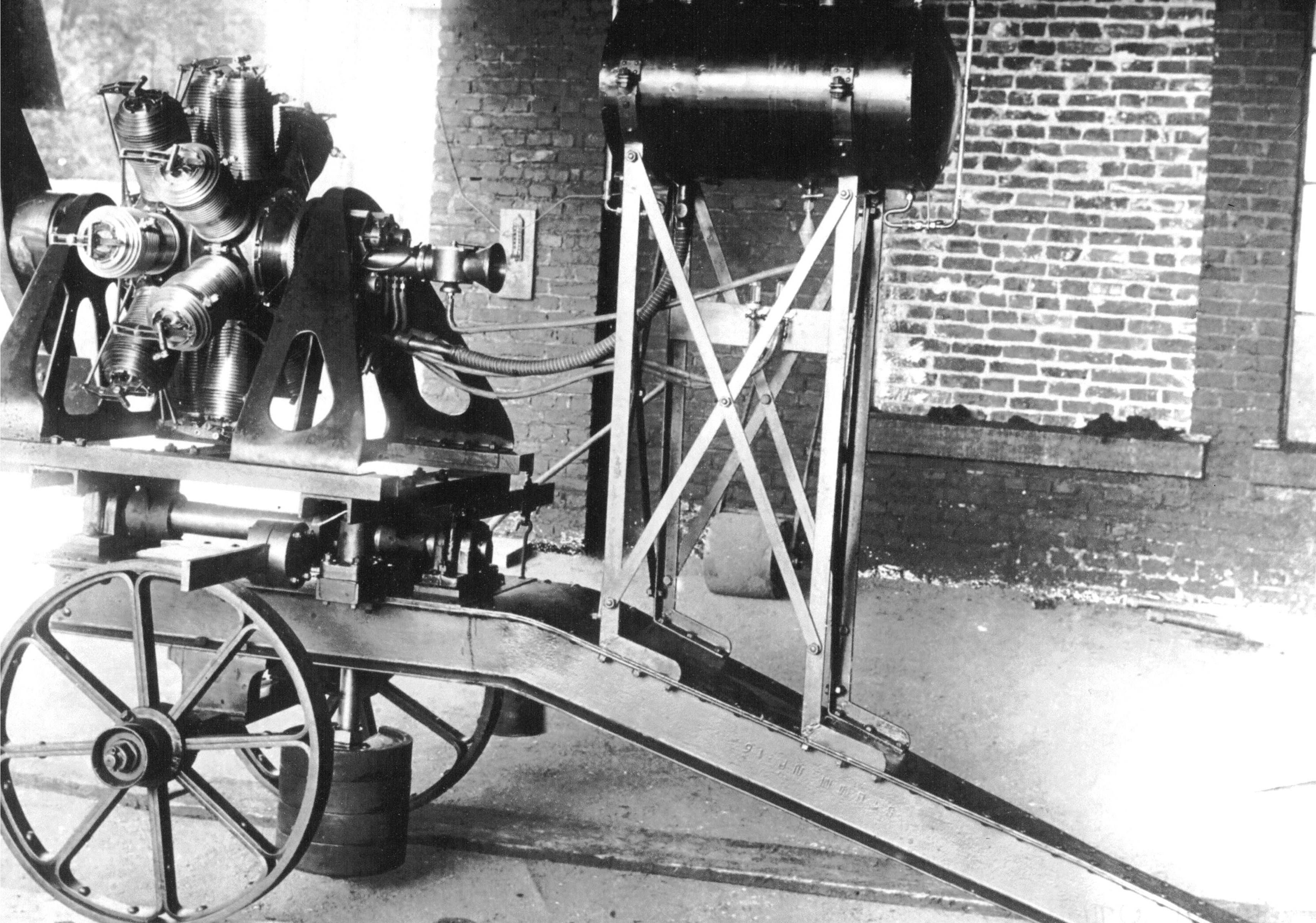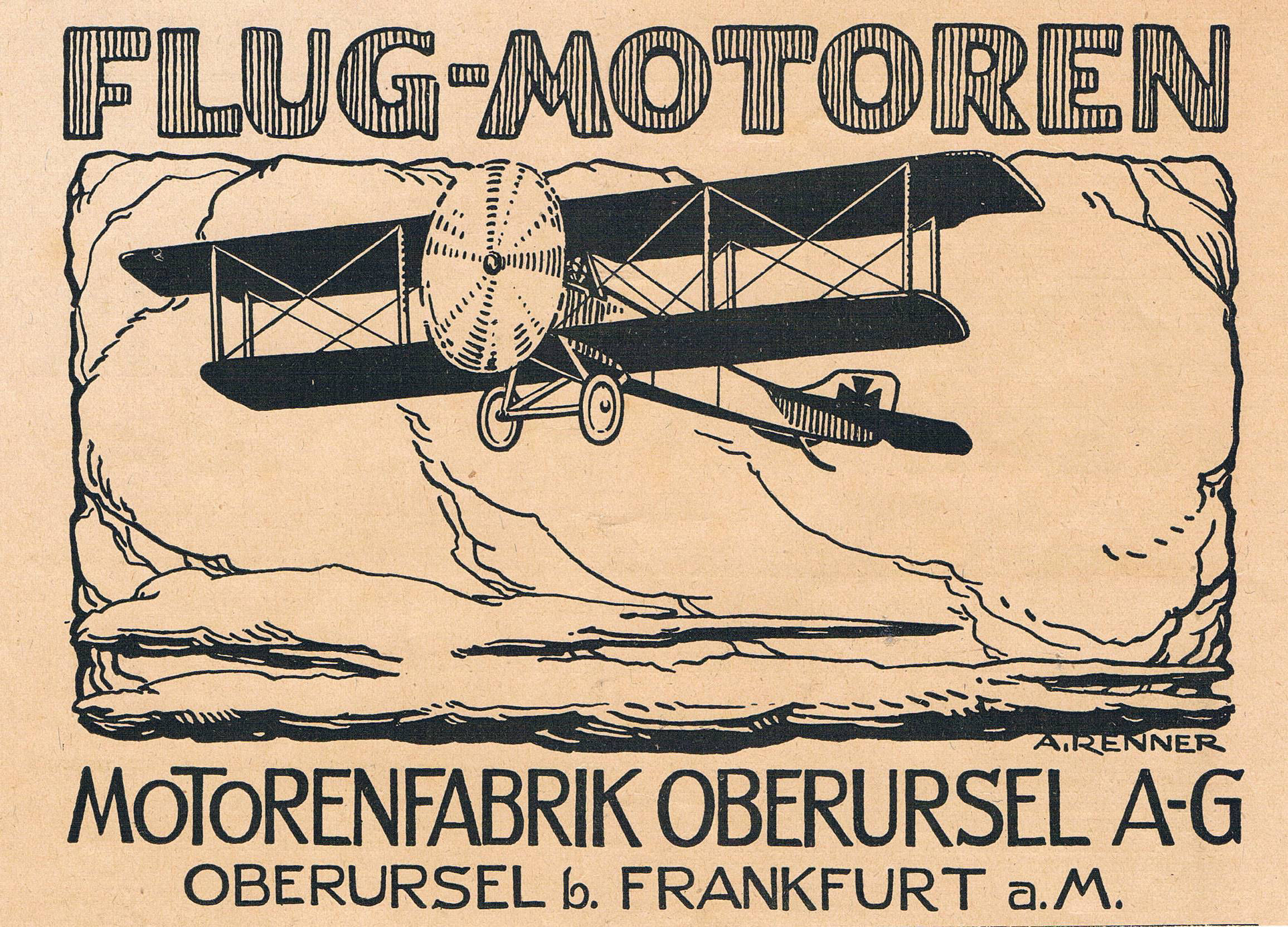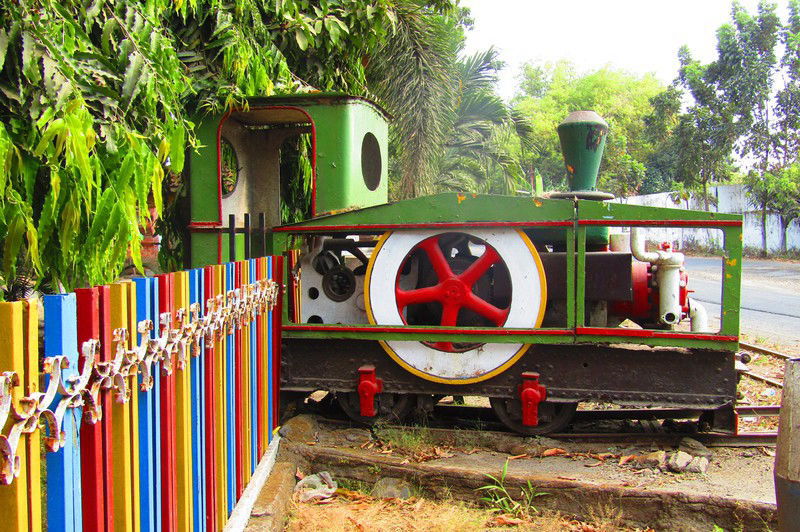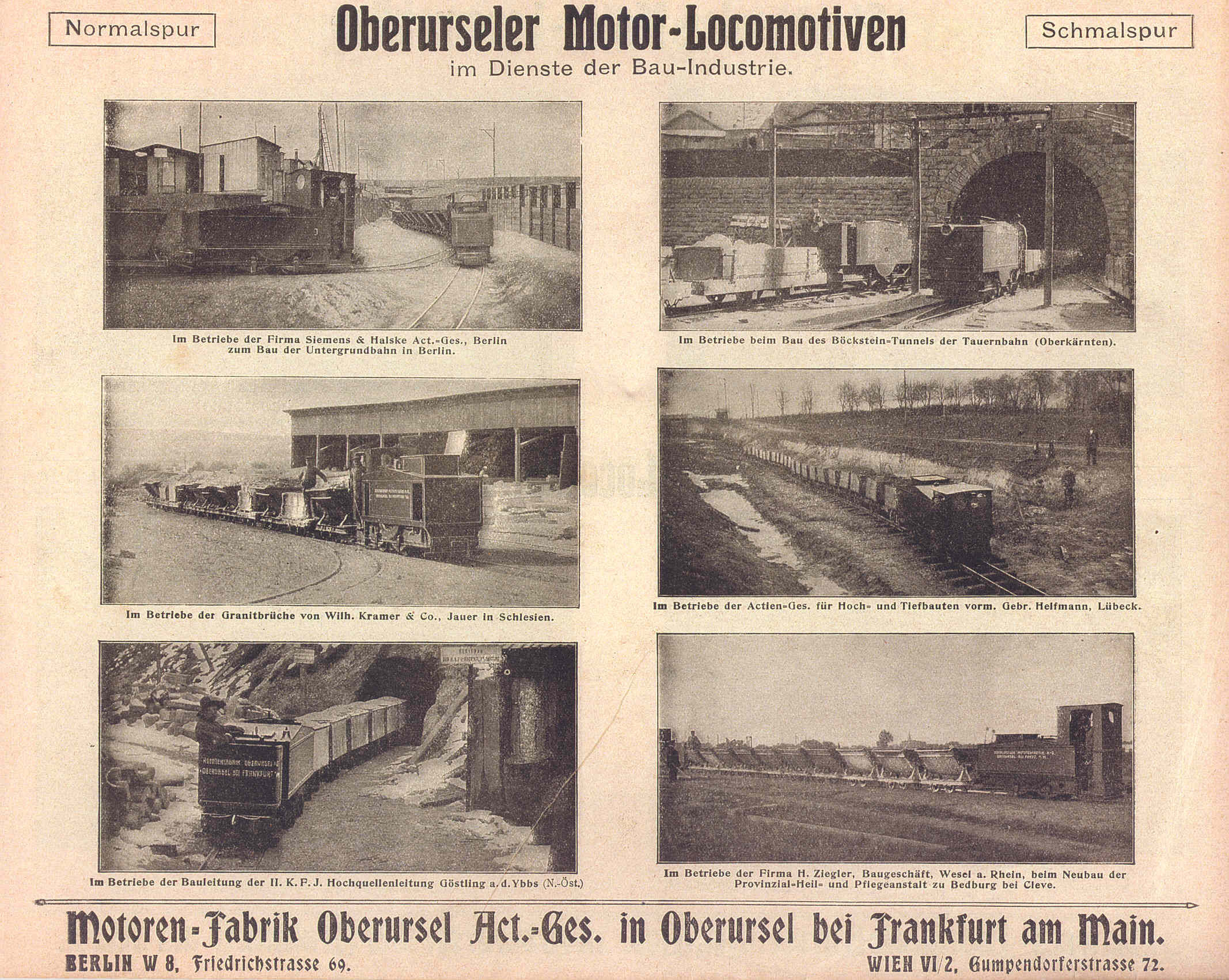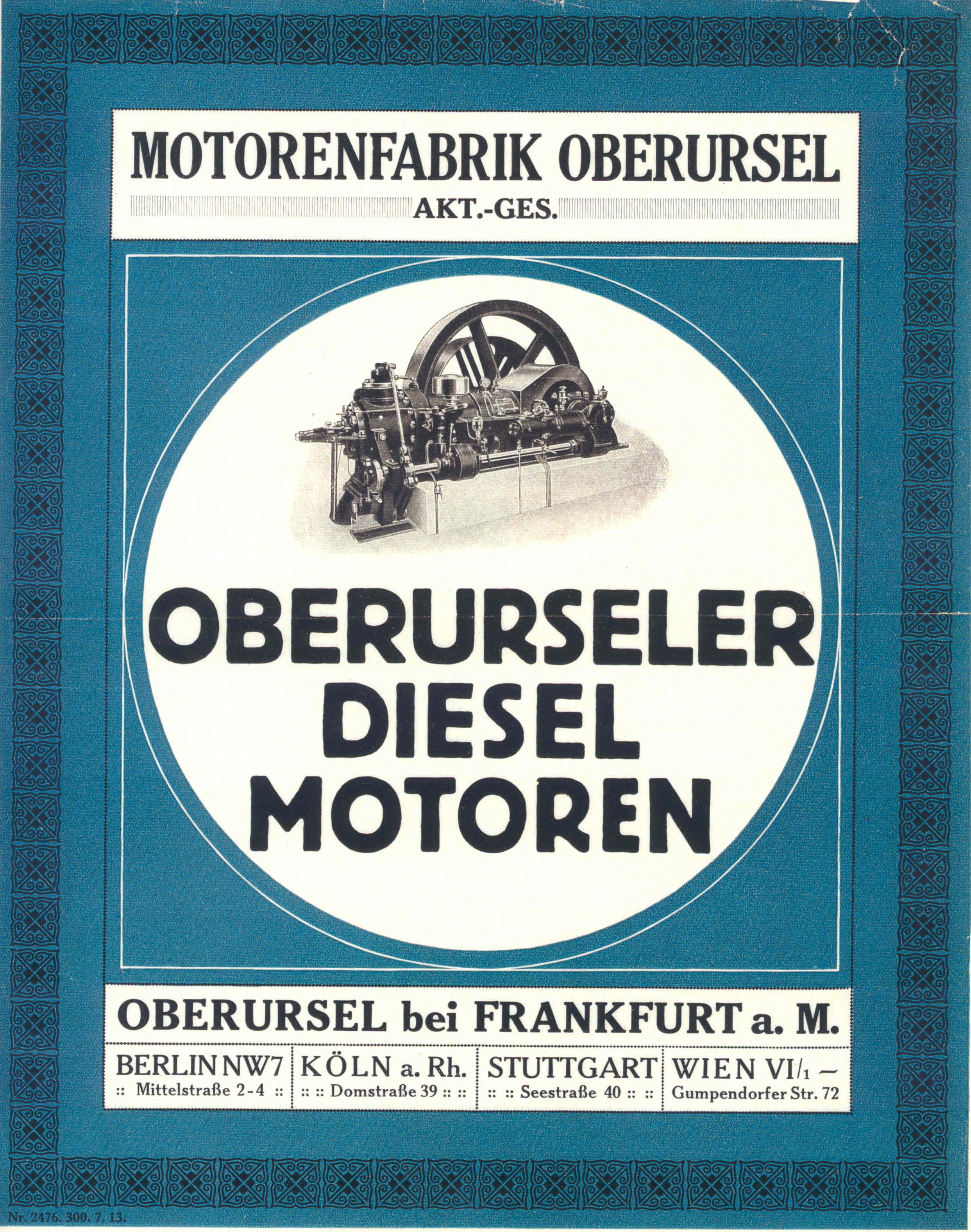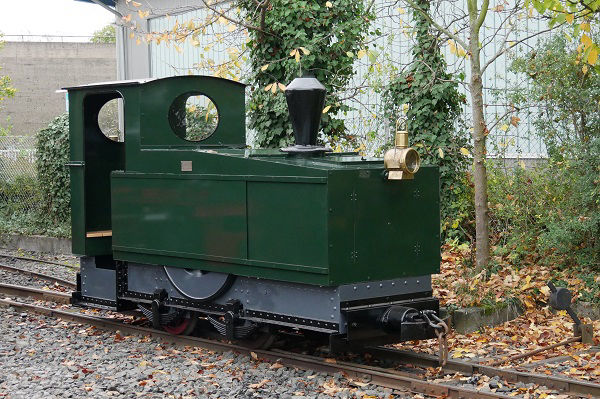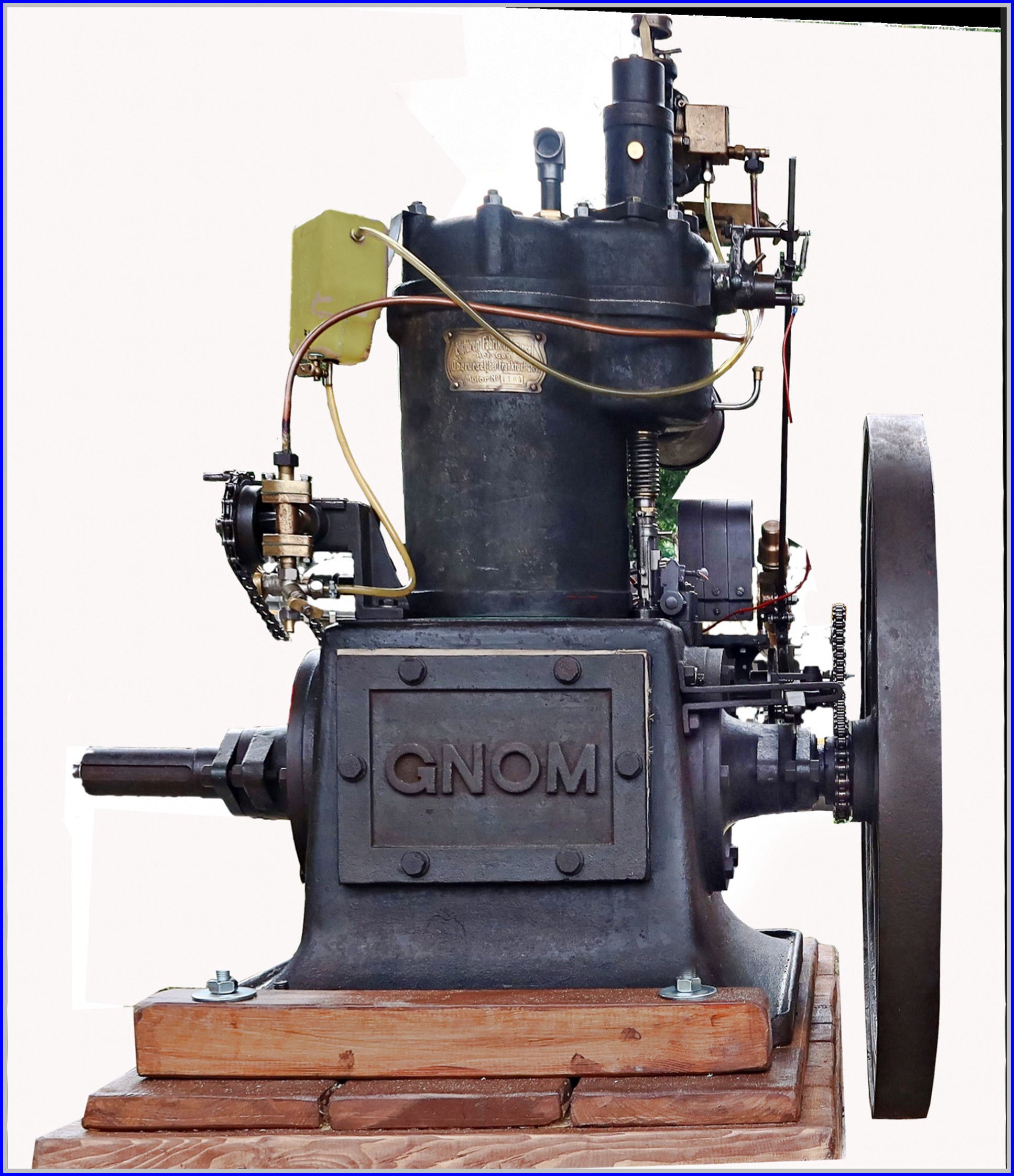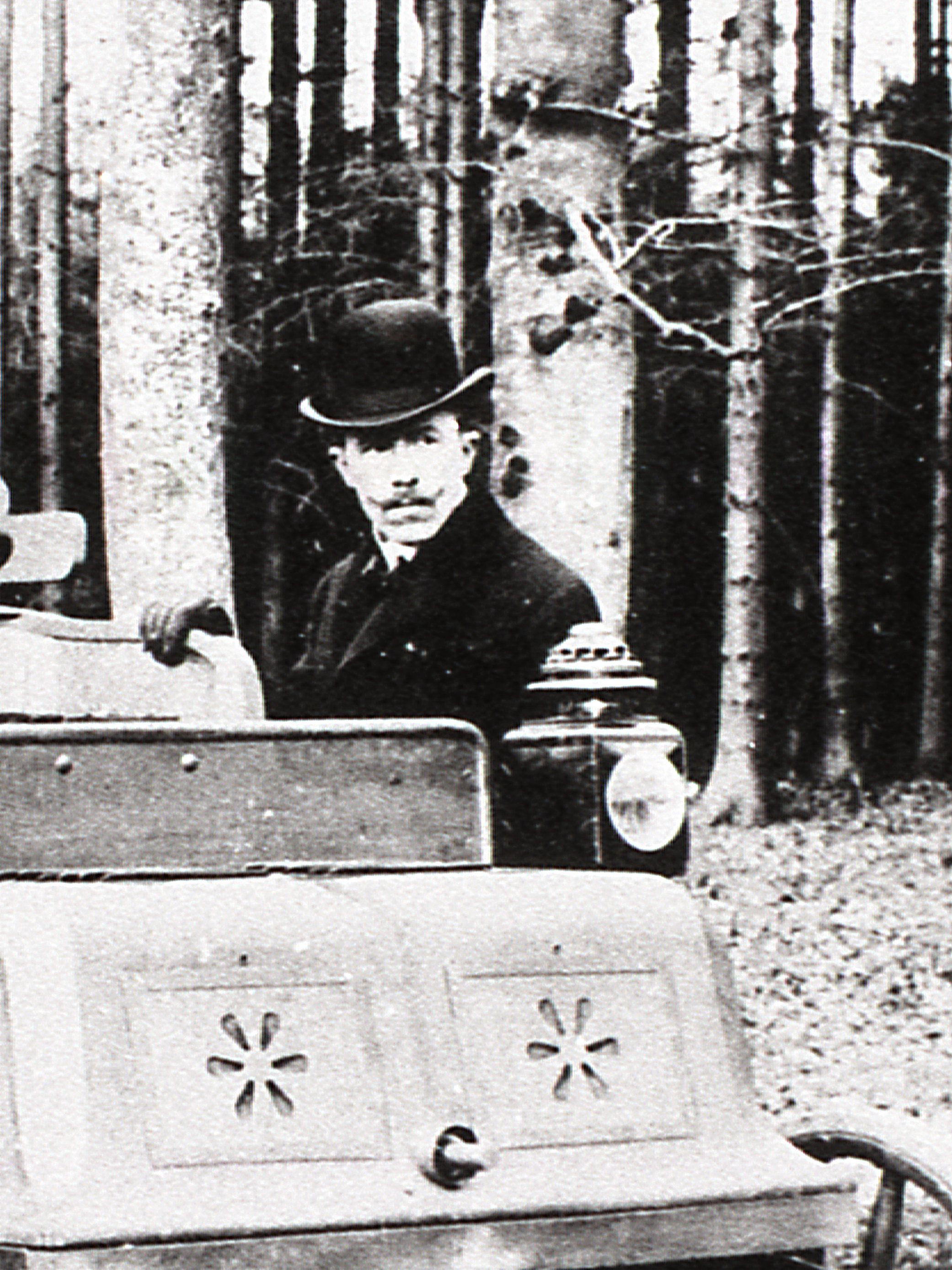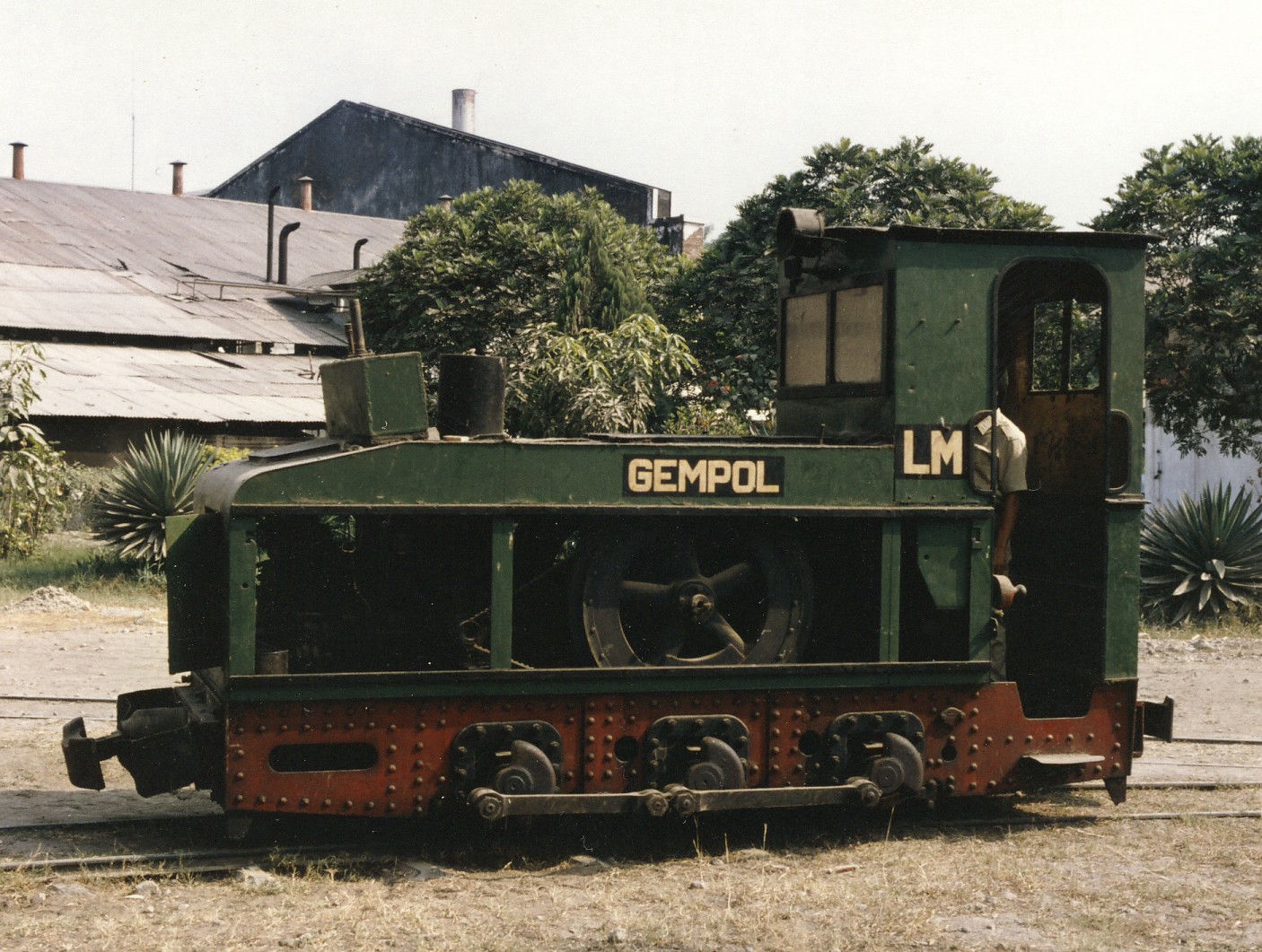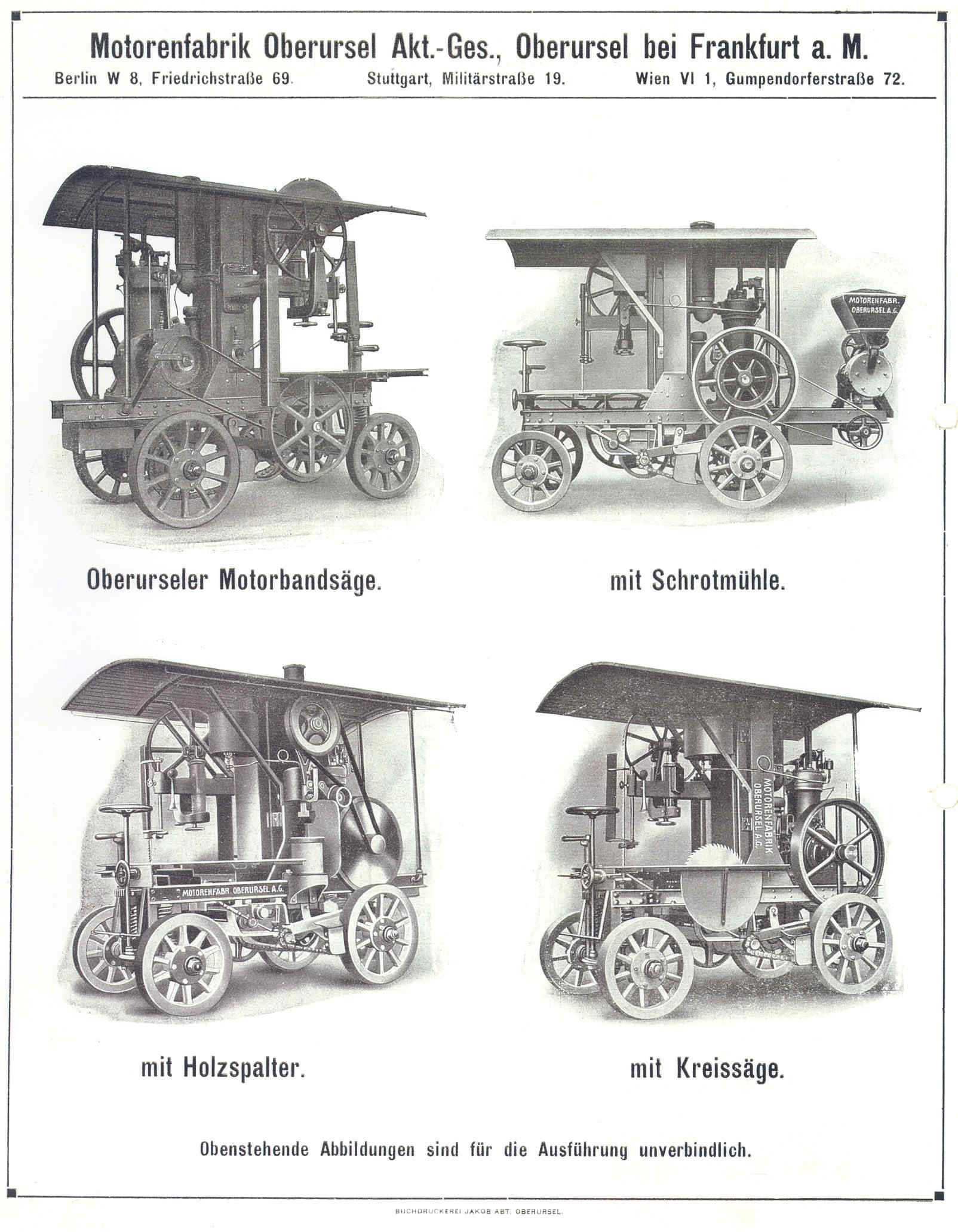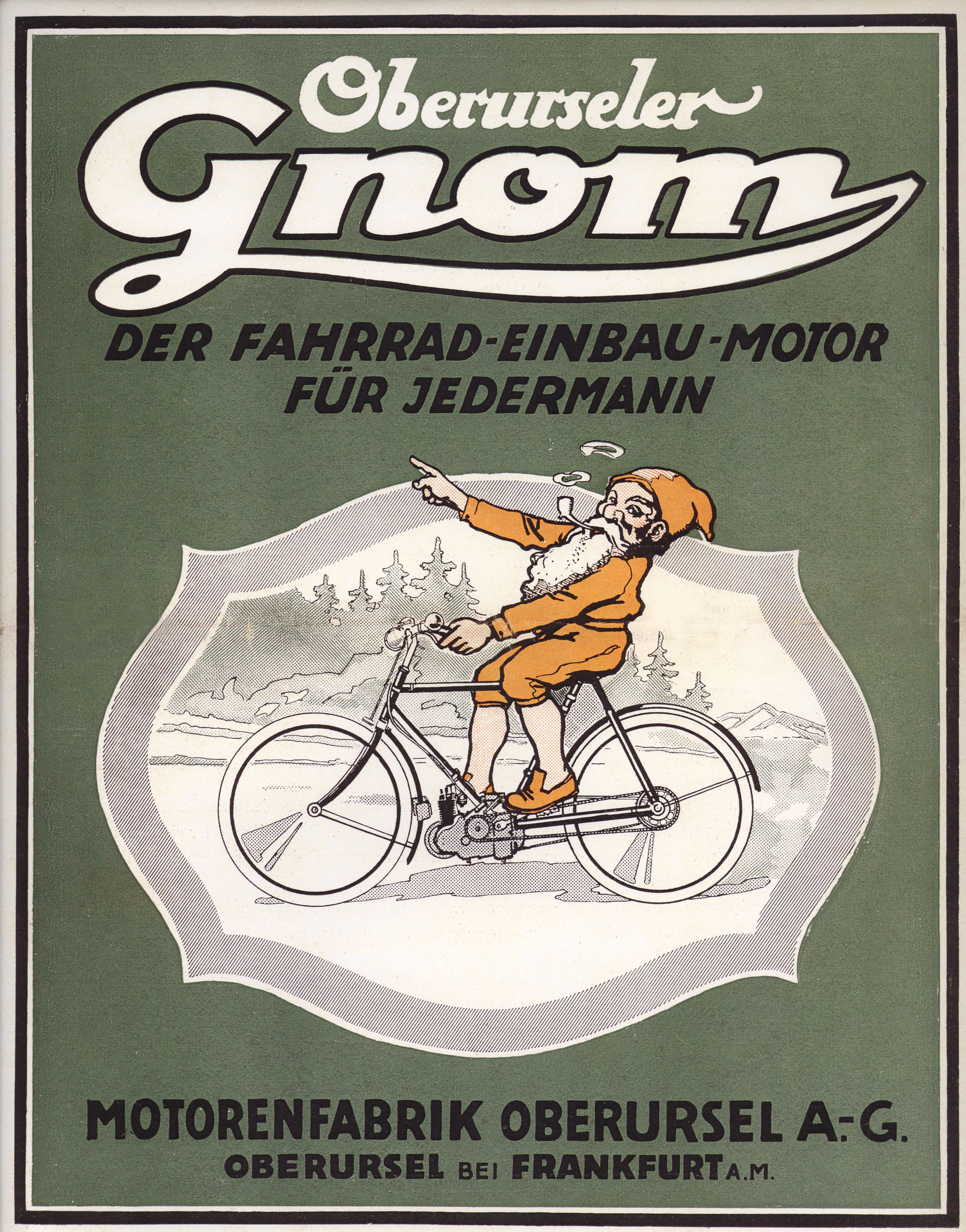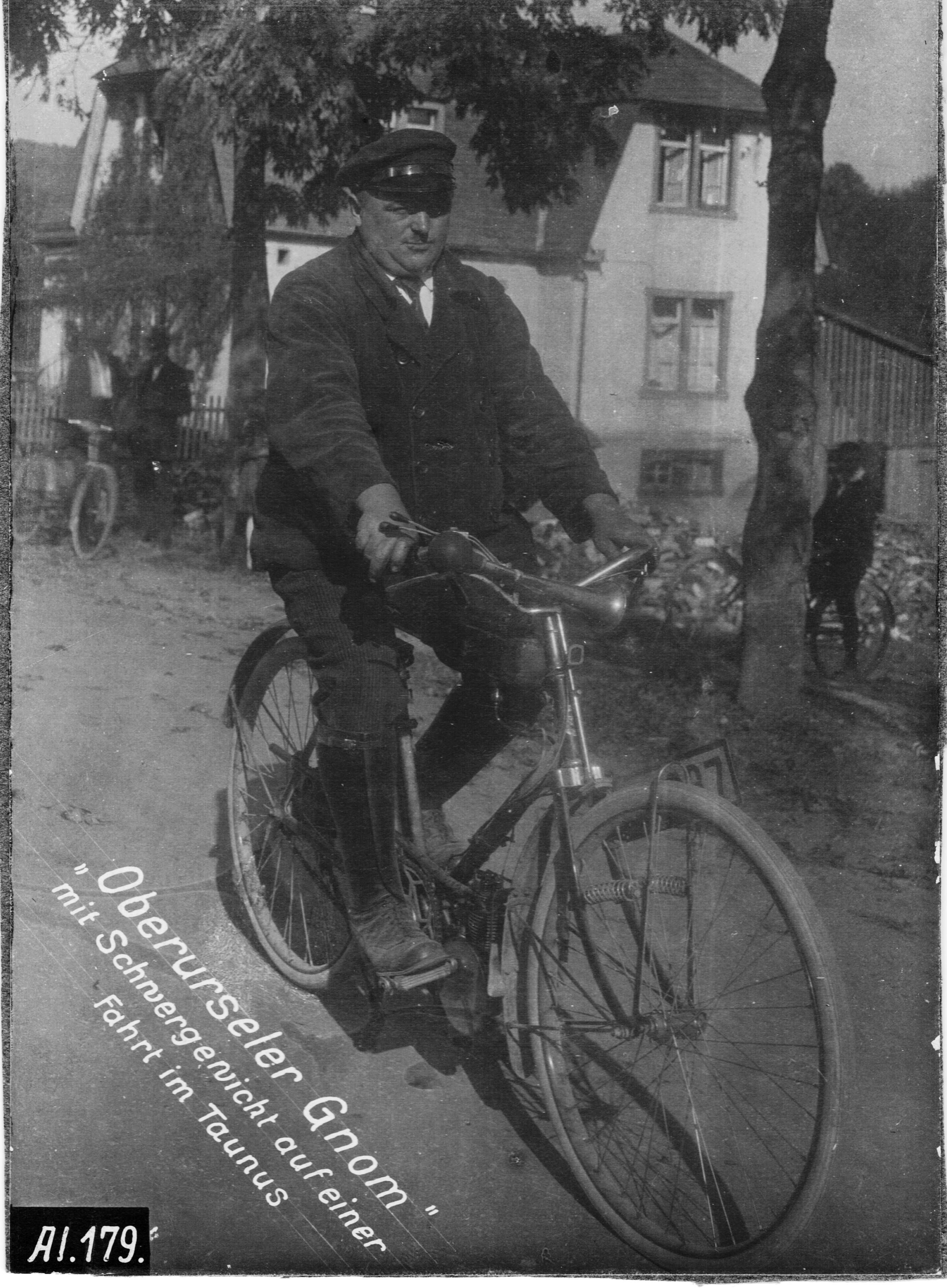1892 – 1921 The golden era of the Motorenfabrik Oberursel
After completion of his studies in engineering, Willy Seck continued to develop a single cylinder stationary engine in his father’s factory. This engine was christened the “GNOM” due to its very stable and compact design. This engine driven on solar oil (a fuel made from brown coal), gas or petroleum was presented to the public at the end of 1891. Willy Seck founded the Motorenfabrik Oberursel under the name of “W.Seck & Co.” for the build and development of the engine. The royal county court in Homburg fixed the date for the start of the company and thereby its formation for the 15 January 1892.The engine found a ready market, particularly with the agricultural industry and with small businesses, where it was met with great interest and won numerous prizes and medals at the exhibitions of its time. The company was converted in January 1896 into a GmbH (Private Limited Com-pany) after the death of its founder, Wilhelm Seck.
At the time the company had already produced one thousand Gnom engines, as well as the first „Lokomobile“ and the Frenchman, Louis Seguin had by that time acquired the licence to produce and market the engine in France. During this period the development of ships winches took pace which were used in their heyday by the large sailing ships and brought engines made in Oberursel to the world. The tireless Willy Seck wanted also to develop a motor vehicle, but his fellow partners refused to do so and Willy Seck left the company and Oberursel in the spring of 1898. He continued his career as a chartered engineer with the development of various short lived types of automobile. He turned his attention to new challenges, particularly in the field of engine ignition and the formation of fuel mixture. Willy Seck died in modest circumstances in Berlin-Wilmersdorf in 1955.
Willy Seck’s departure as shareholder from the Motorenfabrik was one of the reasons for the trans-formation of the company into a Plc. In 1900 the Motorenfabrik commenced with the construction of engine locomotives and very soon this engine made a significant name for itself in tunnel construction projects in the Alps. The locomotives were also widely used in pits, for shunting, in factories and as narrow-gauge locomotives. During the first world war alone around seven hundred locomotives were produced. Having built around two thousand engines by 1922, the Motorenfabrik advanced to become the second largest manufacturer in Germany after the Gas Motorenfabrik Deutz. Initially, many of these locomotives were equipped with engines driven by ethyl alcohol and the Motorenfabrik Oberursel had achieved a leading role in Germany at the introduction of this engine from 1899 on. The use of ethyl alcohol was at that time promoted by the state, that wanted to stem the consumption of spirits.
1912 – A new factory is created: The edifices of the factory from 1882 were expanded as a result in the growth of business. However, in 1911 the possibilities to expand the site were exhausted and so the foundation stone was laid to build a new factory complex under the existing buildings. In 1913, a wing for aircraft engines was added to the diesel engine building, erected in 1912. Further wings and the impressive new administration building were added by 1918. These collections of buildings, which even today pervade an impressive image of the Motorenfabrik, were declared a cultural monument in 1980.
The aircraft engines in the First World War: In April of 1913 the Motorenfabrik Oberursel acquired the license to manufacture and to market the successful French Gnome rotary engine from the Société des Moteurs Gnome of the Seguin Brothers. One of the Seguin brothers owed the upturn of his company, founded in 1895, to the manufacture of the licensed Gnom engines by Seck. Soon after World War One broke out the rapid development of military aviation resulted in a profound change in the Motorenfabrik Oberursel. Up until the end of 1918 the factory produced around three thousand Oberursel rotary engines. These engines were a further development of the French Gnome. The most well known of these engines is the 9 cylinder engine UR-II, installed in the Fokker triplane, Dr I. Manfred Freiherr von Richthofen (Red Baron), the most successful German air ace, achieved 19 of his 80 aerial victories in this aircraft before he was shot down on 21 April 1918 over the Somme.
Not much fewer than the approximately three thousand newly built engines were overhauled in the factory. Almost five thousand soldiers visited the engine school at the factory where they were instructed during a four week course in the repair of the Oberursel aircraft engines. During the difficult times after the First World War the Motorenfabrik Oberursel was not able to pick up on the earlier sales successes of its engines and machines for civilian use. The smaller integrated “Oberursel Gnom” engine for bicycles could not stop the demise. As a matter of fact from this engine emerged the legendary Motorcycle brand HOREX.
After completion of his studies in engineering, Willy Seck continued to develop a single cylinder stationary engine in his father’s factory. This engine was christened the “GNOM” due to its very stable and compact design. This engine driven on solar oil (a fuel made from brown coal), gas or petroleum was presented to the public at the end of 1891. Willy Seck founded the Motorenfabrik Oberursel under the name of “W.Seck & Co.” for the build and development of the engine. The royal county court in Homburg fixed the date for the start of the company and thereby its formation for the 15 January 1892.The engine found a ready market, particularly with the agricultural industry and with small businesses, where it was met with great interest and won numerous prizes and medals at the exhibitions of its time. The company was converted in January 1896 into a GmbH (Private Limited Com-pany) after the death of its founder, Wilhelm Seck.
At the time the company had already produced one thousand Gnom engines, as well as the first „Lokomobile“ and the Frenchman, Louis Seguin had by that time acquired the licence to produce and market the engine in France. During this period the development of ships winches took pace which were used in their heyday by the large sailing ships and brought engines made in Oberursel to the world. The tireless Willy Seck wanted also to develop a motor vehicle, but his fellow partners refused to do so and Willy Seck left the company and Oberursel in the spring of 1898. He continued his career as a chartered engineer with the development of various short lived types of automobile. He turned his attention to new challenges, particularly in the field of engine ignition and the formation of fuel mixture. Willy Seck died in modest circumstances in Berlin-Wilmersdorf in 1955.
Willy Seck’s departure as shareholder from the Motorenfabrik was one of the reasons for the trans-formation of the company into a Plc. In 1900 the Motorenfabrik commenced with the construction of engine locomotives and very soon this engine made a significant name for itself in tunnel construction projects in the Alps. The locomotives were also widely used in pits, for shunting, in factories and as narrow-gauge locomotives. During the first world war alone around seven hundred locomotives were produced. Having built around two thousand engines by 1922, the Motorenfabrik advanced to become the second largest manufacturer in Germany after the Gas Motorenfabrik Deutz. Initially, many of these locomotives were equipped with engines driven by ethyl alcohol and the Motorenfabrik Oberursel had achieved a leading role in Germany at the introduction of this engine from 1899 on. The use of ethyl alcohol was at that time promoted by the state, that wanted to stem the consumption of spirits.
1912 – A new factory is created: The edifices of the factory from 1882 were expanded as a result in the growth of business. However, in 1911 the possibilities to expand the site were exhausted and so the foundation stone was laid to build a new factory complex under the existing buildings. In 1913, a wing for aircraft engines was added to the diesel engine building, erected in 1912. Further wings and the impressive new administration building were added by 1918. These collections of buildings, which even today pervade an impressive image of the Motorenfabrik, were declared a cultural monument in 1980.
The aircraft engines in the First World War: In April of 1913 the Motorenfabrik Oberursel acquired the license to manufacture and to market the successful French Gnome rotary engine from the Société des Moteurs Gnome of the Seguin Brothers. One of the Seguin brothers owed the upturn of his company, founded in 1895, to the manufacture of the licensed Gnom engines by Seck. Soon after World War One broke out the rapid development of military aviation resulted in a profound change in the Motorenfabrik Oberursel. Up until the end of 1918 the factory produced around three thousand Oberursel rotary engines. These engines were a further development of the French Gnome. The most well known of these engines is the 9 cylinder engine UR-II, installed in the Fokker triplane, Dr I. Manfred Freiherr von Richthofen (Red Baron), the most successful German air ace, achieved 19 of his 80 aerial victories in this aircraft before he was shot down on 21 April 1918 over the Somme.
Not much fewer than the approximately three thousand newly built engines were overhauled in the factory. Almost five thousand soldiers visited the engine school at the factory where they were instructed during a four week course in the repair of the Oberursel aircraft engines. During the difficult times after the First World War the Motorenfabrik Oberursel was not able to pick up on the earlier sales successes of its engines and machines for civilian use. The smaller integrated “Oberursel Gnom” engine for bicycles could not stop the demise. As a matter of fact from this engine emerged the legendary Motorcycle brand HOREX.
